Artists Quotations
Why Do Old Masters’ Quotes Still Resonate Today?

Artistic wisdom passed through generations, why do old masters’ quotes still resonate today? As aspiring masters ourselves, we yearn for the timeless advice and insights into the creative process that these master artists offer. Their words hold the key to mastering technique and understanding the influence of contemporary art movements.
These quotes, spoken by cultural icons and influencers, serve as catalysts for artistic dialogue and fuel our passion for mastery. The enduring legacy of these artistic sayings reminds us of the profound impact art has on our lives.
So let us embark on a journey to explore why these old masters’ quotes continue to resonate, guiding us toward our own artistic enlightenment.
Key Takeaways
- Old masters’ quotes offer guidance and insights that shape our understanding and practice of art.
- The enduring legacy of these quotes reminds us of art’s profound impact and serves as a bridge connecting us to the past.
- Old masters’ quotes encourage artists to push boundaries, explore creativity, and contribute to the evolution of art.
- Quotes from influential figures serve as sources of inspiration, reinforcing artistic principles and values.
Artistic Wisdom Passed Through Generations
We continue to benefit from the artistic wisdom passed through generations, shaping our understanding and practice of art. The advice and insights provided by the old masters have become invaluable sources of creative inspiration for artists today. Throughout history, artists have sought guidance from those who came before them, turning to the words and teachings of renowned painters, sculptors, and thinkers. The artistic advice offered by these masters offers a glimpse into the creative process, revealing the techniques and principles that have stood the test of time.

One aspect of artistic wisdom that continues to resonate is the emphasis on observation and understanding of the world around us. From Leonardo da Vinci’s meticulous studies of anatomy to Vincent van Gogh’s vibrant landscapes, the old masters remind us of the importance of keen observation and attention to detail. Their work serves as a constant reminder to look closely, to see beyond the surface and capture the essence of a subject.
In addition to technical guidance, the old masters also offer insights into the philosophical and emotional aspects of art. Their words provide a deeper understanding of the creative journey, offering solace and encouragement to aspiring artists. Whether it’s Michelangelo’s famous quote, ‘Every block of stone has a statue inside it and it’s the task of the sculptor to discover it,’ or Georgia O’Keeffe’s advice to ‘fill a space in a beautiful way,’ these nuggets of wisdom continue to inspire artists to push boundaries and explore the depths of their own creativity.
The artistic wisdom passed through generations serves as a bridge connecting us to the past, while also guiding us towards the future. By studying the advice and insights of the old masters, we gain a deeper appreciation for the rich history of art and the enduring principles that underpin it. Their words continue to resonate today, reminding us of the transformative power of art and encouraging us to pursue our creative passions with dedication and purpose.
Timeless Advice From Master Artists
Master artists offer timeless advice that continues to resonate today. Their wisdom and insights into the creative process provide valuable guidance and inspiration for artists of all generations. Through their words, we gain a deeper understanding of the artistic journey and the challenges that come with it. Here are some examples of the timeless advice from master artists:
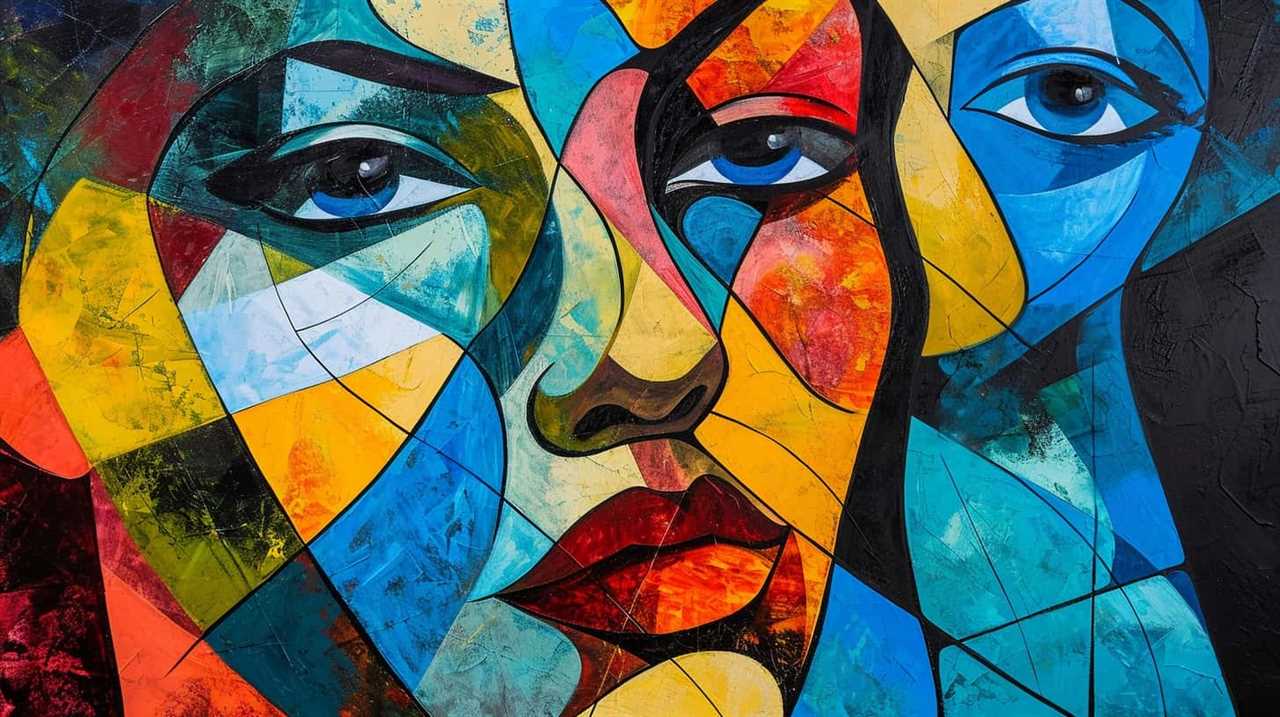
| Artist | Quote |
|---|---|
| Leonardo da Vinci | "Simplicity is the ultimate sophistication." |
| Vincent van Gogh | "Great things are done by a series of small things brought together." |
| Pablo Picasso | "Every act of creation is first an act of destruction." |
| Georgia O’Keeffe | "I found I could say things with color and shapes that I couldn’t say any other way." |
| Salvador Dalí | "Have no fear of perfection – you’ll never reach it." |
These quotes encapsulate the essence of their respective artists’ philosophies and offer valuable insights into the creative process. Leonardo da Vinci encourages us to find beauty in simplicity, reminding us that complexity is not always necessary for artistic excellence. Van Gogh’s quote emphasizes the importance of perseverance and the incremental nature of artistic progress. Picasso’s words remind us that creativity often requires breaking down existing conventions and pushing boundaries. O’Keeffe’s quote highlights the power of visual expression and the unique language of art. And Dalí’s statement encourages artists to embrace imperfection and the freedom that comes with it.
These timeless gems of advice serve as a guiding light, inspiring artists to explore their own creativity, push their boundaries, and create meaningful art that resonates with audiences. Insights into the creative process.
Insights Into the Creative Process
Our exploration of the timeless wisdom of old masters extends to gaining insights into the creative process. As aspiring artists, we often find ourselves seeking creative breakthroughs, those moments of inspiration and innovation that propel our work forward. The old masters understood the importance of these breakthroughs and left us with valuable insights into how they achieved them.
One key aspect of the creative process highlighted by the old masters is the role of intuition. They recognized that intuition, that gut feeling guiding their artistic decisions, played a vital role in their creative breakthroughs. By trusting their instincts and embracing their inner voice, they were able to push boundaries and explore new artistic territories.
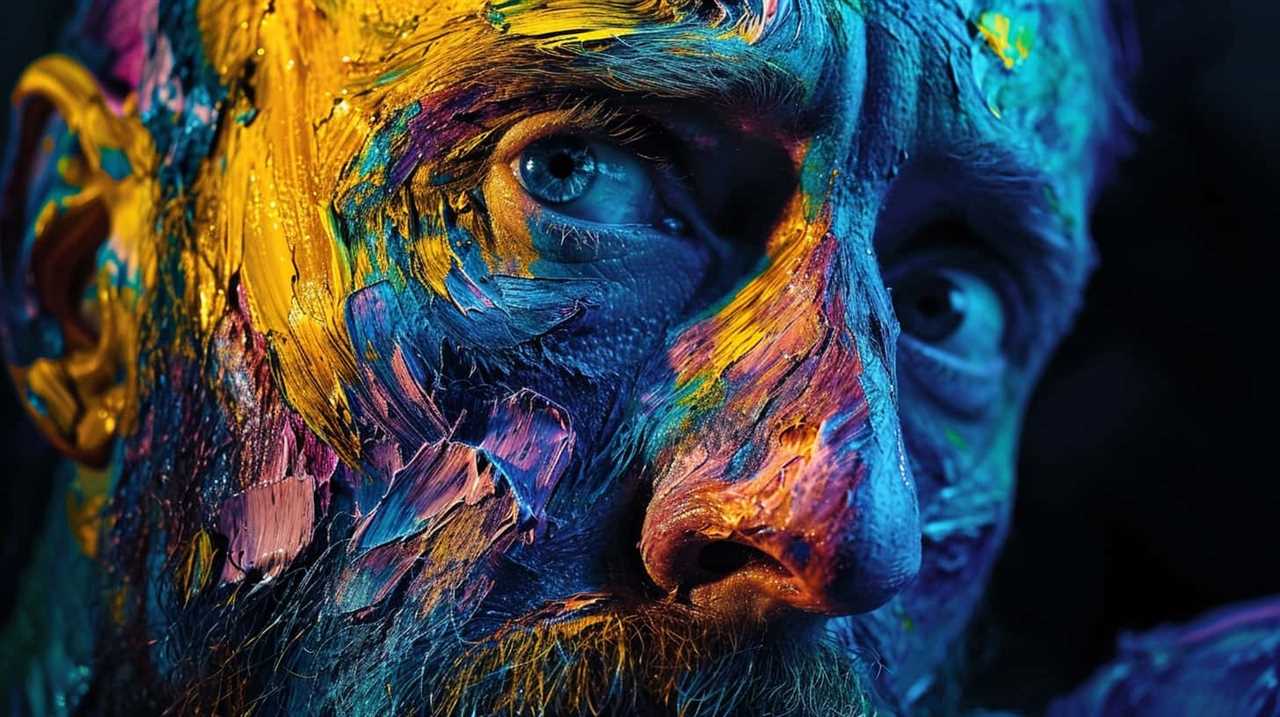
The old masters’ emphasis on intuition reminds us that art isn’t solely a rational pursuit. It’s a process that requires us to tap into our emotions, instincts, and unconscious mind. By embracing our intuition, we can access new ideas, perspectives, and approaches that may otherwise remain hidden.
Transitioning into the subsequent section on ‘lessons on mastering technique,’ we can see how insights into the creative process, such as the role of intuition, are closely intertwined with the development of technical mastery. Understanding the creative process allows us to approach technique with a deeper understanding and purpose, further enhancing our artistic abilities.
Lessons on Mastering Technique
Transitioning from gaining insights into the creative process, we can now delve into the lessons on mastering technique as revealed by the old masters. These lessons provide a roadmap for those seeking to elevate their craft and achieve mastery in their chosen field. Through their exploration of technique, the old masters have gifted us with invaluable knowledge that we can apply to our own artistic journey.
- Precision and Control: The old masters understood the importance of honing one’s skills and perfecting the execution of their craft. They emphasized the need for precision and control in every stroke, every note, and every word.
- Study and Observation: To master technique, the old masters stressed the importance of studying the works of those who came before them. By closely observing and analyzing the techniques employed by their predecessors, they were able to build upon their knowledge and develop their own unique style.
- Experimentation and Innovation: The old masters encouraged artists to push the boundaries of their chosen medium. They believed that true mastery could only be achieved through constant experimentation and the willingness to embrace new techniques and ideas.
- Discipline and Perseverance: The path to mastery isn’t an easy one. The old masters understood the importance of discipline and perseverance in the face of challenges and setbacks. They taught us that true mastery requires dedication, hard work, and a never-ending desire to improve.
Influence on Contemporary Art Movements
When examining the influence of Old Masters on contemporary art movements, it becomes evident that their timeless artistic inspiration has greatly shaped modern creative expression.

The techniques, themes, and philosophical ideas explored by Old Masters continue to resonate with artists today, serving as a foundation for new artistic movements to emerge.
Timeless Artistic Inspiration
In exploring the timeless artistic inspiration of the Old Masters, we discover their significant influence on contemporary art movements. These influential artists continue to inspire and shape the work of today’s artists through their enduring influence.
Here are four ways in which the Old Masters’ timeless inspiration continues to impact contemporary art:
- Techniques: The Old Masters’ mastery of techniques such as chiaroscuro and sfumato serves as a foundation for contemporary artists, allowing them to create depth and realism in their work.
- Subject Matter: Themes explored by the Old Masters, such as human emotions, mythology, and religious narratives, still resonate with contemporary artists, who continue to explore these timeless subjects in their own unique ways.
- Composition: The Old Masters’ understanding of composition and balance has influenced contemporary artists in creating visually compelling and harmonious artworks.
- Symbolism: Symbols and allegories used by the Old Masters still find their place in contemporary art, allowing artists to convey deeper meanings and messages to their audience.
Through their timeless inspiration and enduring influence, the Old Masters continue to shape and inspire contemporary art movements, guiding artists towards new levels of mastery and creativity.
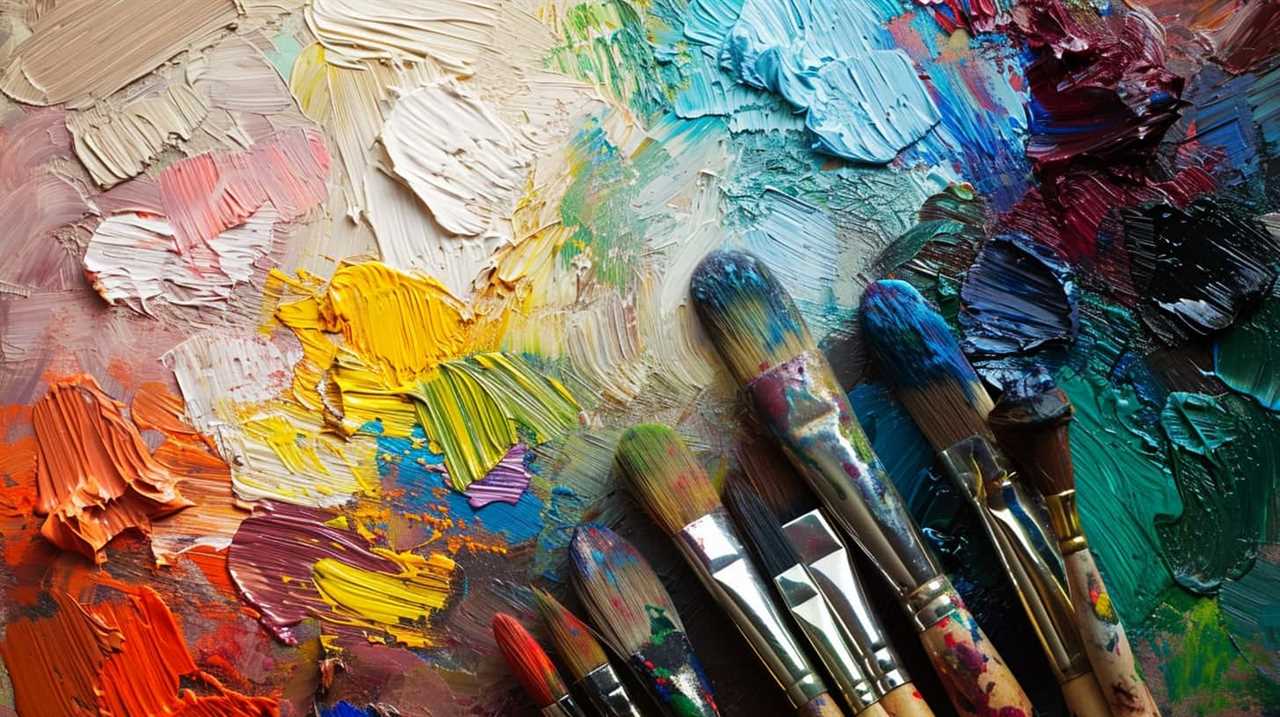
Shaping Modern Creative Expression
The Old Masters’ influence on contemporary art movements is evident in the ways they’ve shaped modern creative expression. The evolution of artistic expression can be traced back to the traditions established by these revered artists. Their techniques, subject matter, and artistic principles have served as a foundation for contemporary artists to build upon and challenge.
While modern art movements may have pushed the boundaries of traditional art forms, they still acknowledge and engage with the ideas and techniques of the Old Masters. The role of tradition in modern art isn’t to be dismissed, but rather to be reinterpreted and reinvented. This ongoing dialogue between past and present allows for a constant exploration of new forms of artistic expression, while still paying homage to the artistic legacy of the Old Masters.
Quotes as Sources of Inspiration
Our experience with quotes as sources of inspiration reveals their enduring power and relevance in our lives. Quotes have the ability to resonate with us, providing guidance, motivation, and a fresh perspective.
Here are four reasons why quotes continue to inspire us:
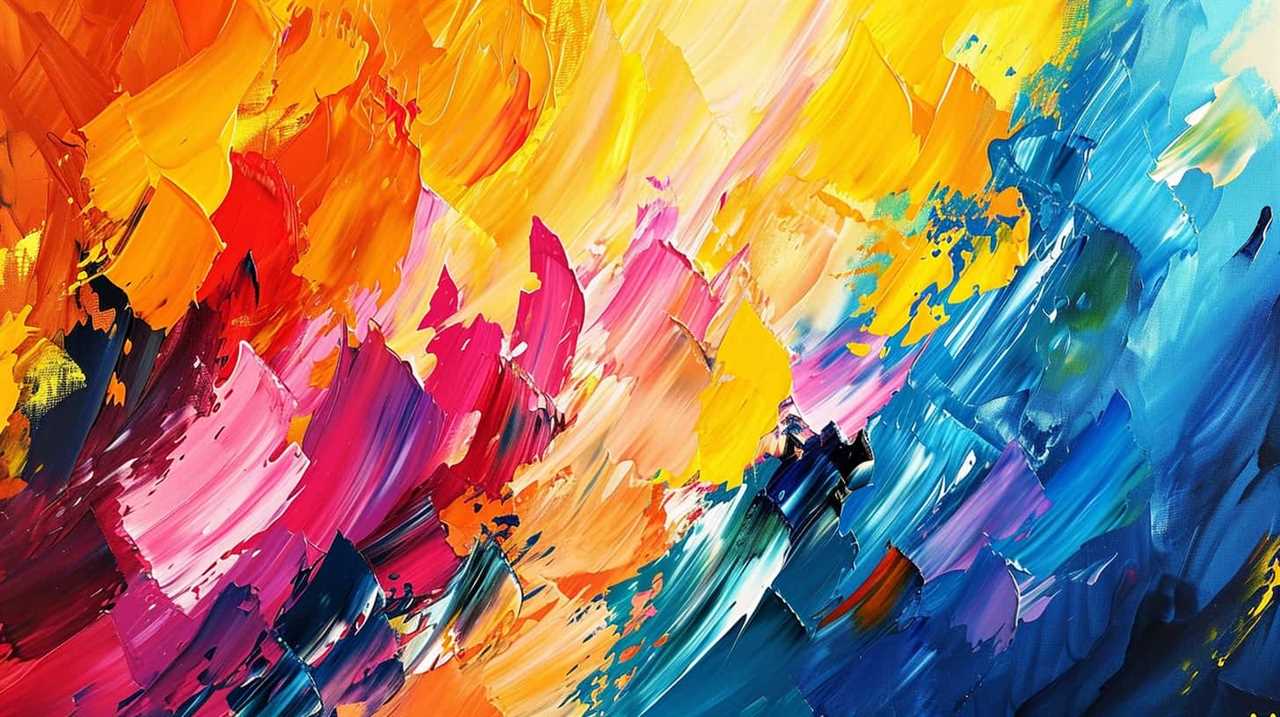
- Inspirational role models: Quotes from influential figures such as artists, philosophers, and leaders serve as a reminder of the greatness that can be achieved. When we read quotes from individuals who’ve overcome challenges and achieved success, we’re inspired to strive for excellence in our own lives.
- Creative motivation: Quotes have a unique ability to spark our creativity and ignite our passion. They can provide us with a new way of thinking or offer a different approach to problem-solving. Quotes often capture the essence of a particular idea or concept in a concise and impactful manner, making them a valuable source of inspiration for artists and creatives.
- Universal wisdom: Quotes often encapsulate universal truths and timeless wisdom. They distill complex ideas into simple, memorable phrases that can be easily understood and applied to our own lives. Quotes have the power to transcend time and culture, resonating with people from different backgrounds and generations.
- Emotional connection: Quotes have a way of evoking emotions within us. Whether it’s a quote that speaks to our deepest fears, desires, or aspirations, they’ve the ability to touch our hearts and stir our souls. Quotes can provide comfort during difficult times or serve as a source of encouragement when we need it most.
Reinforcing Artistic Principles and Values
As artists, we often find ourselves seeking timeless artistic lessons to guide our creative journey. Old masters’ quotes have the power to reinforce these principles and values, serving as a source of inspiration and reminding us of the foundations of our craft.
Their enduring wisdom resonates with us today, offering insights into the artistic process, the importance of technique, and the pursuit of beauty. Through these quotes, we’re reminded of the significance of artistic principles and values that have stood the test of time.
Timeless Artistic Lessons
We embrace the timeless artistic lessons of the Old Masters, reinforcing our artistic principles and values. These enduring artistic principles guide us in our creative journey, providing a solid foundation upon which we can build our own unique style.
The Old Masters remind us that mastery comes not only from technical skill, but also from a deep understanding of composition, light and shadow, and the power of storytelling. Their works serve as timeless creative inspiration, reminding us of the importance of craftsmanship, dedication, and the pursuit of excellence.
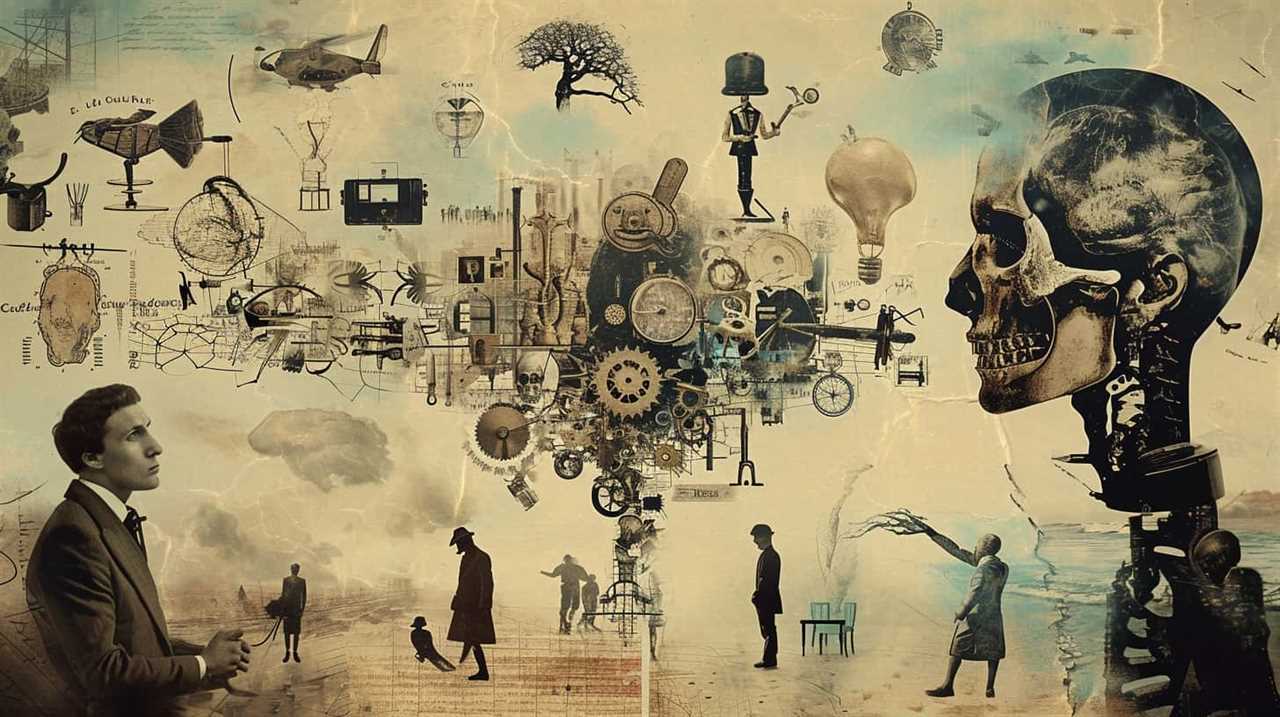
As we study their masterpieces, we absorb their wisdom and learn from their approach to color, form, and perspective. Through the lessons of the Old Masters, we gain a deeper appreciation for the art of the past, and we’re inspired to create our own artistic legacies, rooted in the foundations they’ve laid.
Now, let’s explore the inspiring creative foundations that the Old Masters have left for us.
Inspiring Creative Foundations
Through the inspiring creative foundations set by the Old Masters, we gain a deeper understanding of artistic principles and values. Their works serve as a wellspring of creative inspiration, guiding us towards excellence in our own artistic endeavors.
The Old Masters’ ability to capture the essence of human emotion and the beauty of the natural world continue to captivate and inspire artists today. Their meticulous attention to detail, mastery of light and shadow, and skillful composition provide invaluable artistic guidance.

Enduring Artistic Wisdom
The enduring artistic wisdom of the Old Masters reinforces the fundamental principles and values that guide our creative journeys. Their insights continue to serve as a wellspring of enduring artistic inspiration, providing transformative artistic guidance for generations of artists.
Here are four ways in which their wisdom resonates with us today:
- Technique: The Old Masters’ mastery of technical skills reminds us of the importance of honing our craftsmanship and striving for excellence in our work.
- Composition: Their understanding of composition teaches us how to arrange elements within our artwork to create visual harmony and impact.
- Light and shadow: The Old Masters’ skillful use of light and shadow inspires us to explore the power of chiaroscuro and its ability to evoke emotion and depth in our art.
- Storytelling: Their ability to tell compelling stories through their artwork encourages us to imbue our own creations with narratives that resonate with viewers.
These enduring principles and values have a profound impact on art education and pedagogy, shaping the way we teach and learn about art.
Impact on Art Education and Pedagogy
In art education and pedagogy, the incorporation of old masters’ quotes has had a lasting impact. These quotes, filled with artistic inspiration and wisdom, serve as powerful tools for nurturing creative expression in students. By exposing learners to the thoughts and ideas of renowned artists from the past, educators can instill a sense of history and tradition while encouraging personal growth and innovation.

The use of old masters’ quotes in art education is not limited to a specific medium or technique. Whether studying painting, sculpture, photography, or any other form of artistic expression, students can benefit from the wisdom imparted by these masters. The following table highlights the diverse range of old masters and their insightful quotes that continue to shape art education:
| Old Master | Quote |
|---|---|
| Leonardo da Vinci | "Art is never finished, only abandoned." |
| Vincent van Gogh | "I am seeking. I am striving. I am in it with all my heart." |
| Pablo Picasso | "Every act of creation is first an act of destruction." |
| Georgia O’Keeffe | "I found I could say things with color and shapes that I couldn’t say any other way." |
Quotes as Windows Into Historical Context
As we delve into the topic of ‘Quotes as Windows Into Historical Context’, it’s essential to understand the significance of these quotes in providing insights into the past. Quotes from old masters serve as windows into historical understanding, offering a glimpse into the thoughts, beliefs, and experiences of artists from centuries ago. These quotes offer valuable lessons for contemporary artists, helping us navigate the complexities of our own artistic journeys.
- Insights into artistic techniques: Old masters’ quotes often reveal the technical processes and approaches they used in creating their masterpieces. From Leonardo da Vinci’s observations on light and shadow to Rembrandt’s musings on the use of color, these quotes provide valuable insights into the methods employed by renowned artists.
- Cultural and societal influences: Quotes from old masters shed light on the cultural and societal contexts in which they worked. They reveal the prevailing artistic trends, the patronage system, and the values and beliefs of their time. Understanding these historical contexts allows contemporary artists to engage with their own art practices more critically.
- Artistic philosophies and ideologies: Old masters’ quotes offer us a window into their artistic philosophies and ideologies. Whether it’s Michelangelo’s emphasis on the importance of study and practice or Vincent van Gogh’s reflections on the power of color and emotion, these quotes provide timeless wisdom that can inspire and guide contemporary artists.
- Continuity and evolution of artistic ideas: Quotes from old masters highlight the continuity and evolution of artistic ideas over time. They show us how certain concepts and principles have persisted throughout history, while also revealing the ways in which artists have challenged and pushed the boundaries of traditional artistic norms.
Resonance With Modern Artistic Challenges
Our exploration of old masters’ quotes reveals a remarkable resonance with the challenges faced by contemporary artists. The words of these masters, spoken centuries ago, continue to hold relevance and offer valuable insights into the modern artistic landscape. The resonance with modern artistic challenges can be seen in the influence that old masters have had on contemporary art movements.
One of the key challenges faced by contemporary artists is the constant quest for innovation and originality. Old masters like Leonardo da Vinci and Vincent van Gogh also grappled with the desire to push boundaries and create something new. Their quotes on experimentation and the importance of individual voice resonate with the struggles faced by artists today.

Another resonant theme is the exploration of the human condition. Old masters often depicted the complexities of human emotions and experiences in their works, and this exploration continues to be a central focus of contemporary art. Artists today still seek to capture the essence of humanity and provoke emotional responses from their audience.
The influence of old masters on contemporary art movements can’t be overstated. From the Impressionists who were inspired by the brushwork of artists like Rembrandt, to the Cubists who drew inspiration from the geometric compositions of Cézanne, the legacy of the old masters lives on in the evolution of art.
Artists as Cultural Icons and Influencers
Continuing our exploration, we frequently observe contemporary artists who’ve become cultural icons and influencers. These artists hold a significant place in society, not only for their artistic prowess but also for the impact they’ve on shaping and reflecting our cultural values.
Here are four ways in which artists become cultural icons and influencers:

- Pushing boundaries: Artists have a unique ability to challenge societal norms and push the boundaries of what’s considered acceptable or conventional. Through their work, they inspire new ways of thinking, encourage dialogue, and provoke introspection.
- Shaping popular culture: Artists often have a direct influence on popular culture. Their creations, whether in the form of paintings, sculptures, music, or films, can shape trends, fashion, and even societal attitudes. Their work becomes a reflection of the times and leaves a lasting impact on future generations.
- Inspiring change: Artists, as cultural icons, have the power to inspire change and motivate others to take action. Their works can address social and political issues, shedding light on injustices and advocating for positive transformation. Artists can mobilize communities and ignite movements through their artistic expressions.
- Passing down artistic wisdom: Artists who’ve achieved cultural icon status become a source of inspiration and guidance for future generations. Their works and philosophies are studied and analyzed, and their artistic wisdom is passed down through the ages, providing a foundation for aspiring artists to build upon.
Quotes as Catalysts for Artistic Dialogue
Artists who become cultural icons and influencers shape popular culture, inspire change, and pass down artistic wisdom, but another significant aspect of their impact is through the quotes they leave behind, which serve as catalysts for artistic dialogue. These quotes have the power to inspire artistic growth and spark creative conversations among artists and enthusiasts alike.
Quotes from renowned artists have the ability to transcend time and space, resonating with people across generations. They encapsulate profound insights and observations about art, life, and the human experience. By distilling complex ideas into concise and memorable phrases, these quotes become powerful tools for communication and reflection.
When artists engage with these quotes, they’re exposed to new perspectives and ways of thinking. They can serve as sources of motivation and encouragement, pushing artists to explore new artistic territories and challenge existing norms. Quotes also have the ability to validate an artist’s experiences and struggles, reminding them that they aren’t alone in their creative journey.
Furthermore, quotes serve as catalysts for artistic dialogue. They provide a common language for artists to discuss their work and ideas, facilitating a deeper understanding and appreciation of art. Artists can analyze and interpret these quotes, engaging in critical conversations that push the boundaries of their own artistic practice.
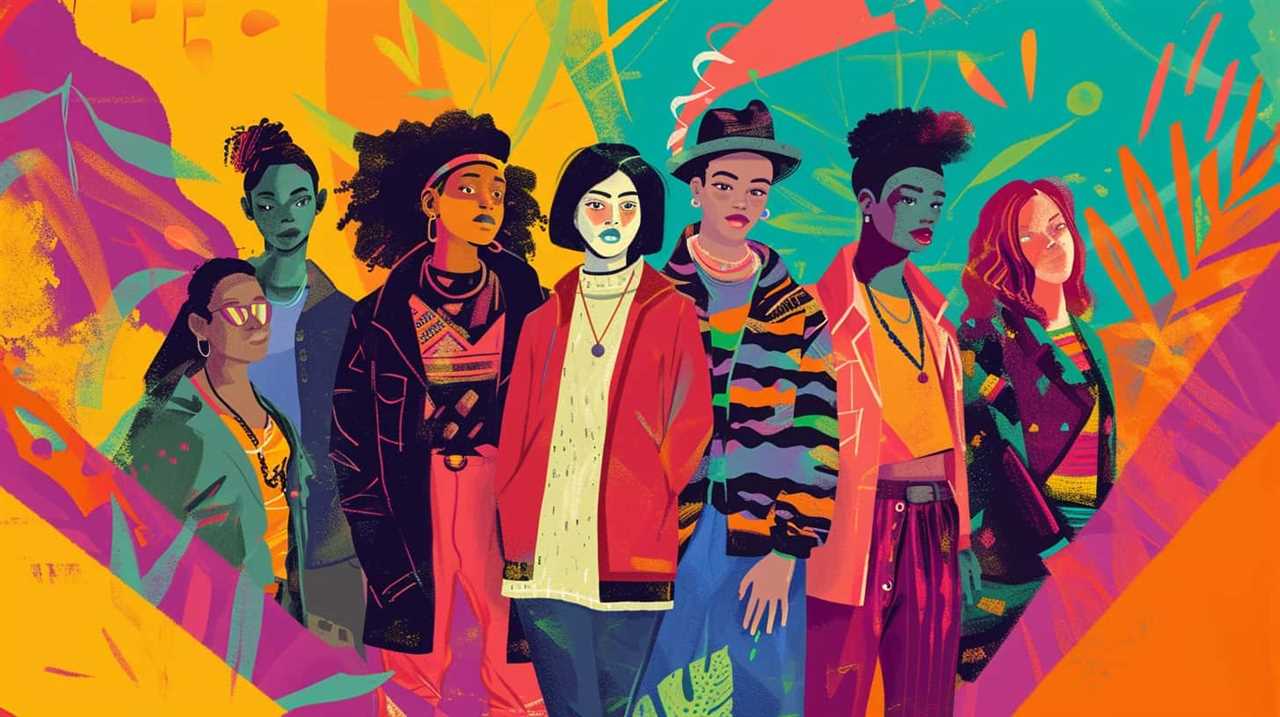
Ultimately, quotes from old masters continue to inspire and resonate because they capture timeless truths about the artistic process. They serve as a bridge between past and present, connecting artists across different eras and cultures. By inspiring artistic growth and sparking creative conversations, these quotes continue to shape and enrich the artistic landscape.
The Enduring Legacy of Artistic Sayings
The enduring legacy of artistic sayings lies in the timeless wisdom they convey. These quotes, passed down through generations, continue to resonate with artists and enthusiasts alike, transcending the boundaries of time and space.
Their impact on contemporary art is undeniable, as they provide insights, inspiration, and guidance, serving as a source of creative fuel for artists today.
Timeless Wisdom of Masters
We are continually amazed by the enduring legacy of artistic sayings, which offer timeless wisdom from the masters. These insightful quotes have stood the test of time, providing us with valuable lessons and guidance in our pursuit of mastery.

Here are four reasons why the wisdom of the old masters still resonates today:
- Historical Significance: These sayings have been passed down through generations, connecting us to the rich history of art and culture.
- Universal Relevance: The wisdom contained in these quotes transcends time and place, speaking to the universal human experience.
- Practical Advice: The masters’ words offer practical insights into artistic techniques, creative processes, and the challenges faced by artists.
- Inspirational Motivation: These sayings serve as a source of inspiration, encouraging us to persevere, push boundaries, and strive for excellence.
The enduring legacy of artistic sayings reminds us of the profound impact that art and creativity have on our lives, making them an invaluable resource for anyone seeking to master their craft.
Relevance Across Generations
As we delve into the topic of ‘Relevance Across Generations (The Enduring Legacy of Artistic Sayings)’, it becomes evident that these timeless quotes continue to resonate today due to their ability to transcend the boundaries of time and culture.
These quotes hold enduring cultural significance because they encapsulate universal truths about the human condition and the creative process. They offer insights into the evolution of artistic techniques, providing valuable guidance for artists across different periods.

For example, Leonardo da Vinci’s famous saying ‘Art is never finished, only abandoned’ speaks to the eternal struggle of artists to capture the essence of their vision. This sentiment remains relevant to contemporary artists who continue to grapple with the pursuit of perfection.
The enduring legacy of these artistic sayings serves as a reminder of the rich history and ongoing relevance of art in our lives.
Impact on Contemporary Art
Old masters’ quotes continue to resonate today, frequently inspiring and guiding contemporary artists in their creative process. The enduring legacy of these artistic sayings is evident in the contemporary interpretations and perspectives of artists today.
Here are four ways in which old masters’ quotes impact and shape contemporary art:

- Inspiration: Artists draw upon the wisdom and insights of the past, finding inspiration in the words of renowned masters. These quotes serve as a wellspring of ideas, helping artists develop their own unique artistic visions.
- Guidance: Old masters’ quotes provide guidance to contemporary artists, offering practical advice on techniques, composition, and artistic principles. Artists can learn from the experiences of those who came before them, honing their skills and expanding their artistic repertoire.
- Contextualization: Quotes from old masters allow contemporary artists to place their work within a broader historical and artistic context. By referencing the past, artists can create a dialogue between tradition and innovation, enriching their artwork with layers of meaning.
- Cultural Continuity: Old masters’ quotes contribute to the preservation and continuation of artistic traditions. By incorporating these quotes into their work, contemporary artists become part of an ongoing artistic conversation, bridging the gap between past and present.
Frequently Asked Questions
How Did Old Master Artists Pass Down Their Artistic Wisdom to Future Generations?
Old master artists passed down their artistic wisdom through a rich tradition of artistic mentorship and apprenticeship. They believed in nurturing talent, sharing techniques, and inspiring future generations to carry on the legacy of their craft.
What Are Some Examples of Timeless Advice From Master Artists?
Timeless wisdom from master artists is a source of artistic inspiration that continues to resonate. Their quotes serve as guiding principles, showcasing the enduring relevance and universal truths of their craft.
Can Insights Into the Creative Process From Old Masters Be Applied to Contemporary Art Practices?
Exploring modern creativity requires applying historical knowledge. By delving into the insights of old masters, we gain a deeper understanding of the creative process and can adapt their wisdom to contemporary art practices.
What Are Some Specific Lessons on Mastering Technique That Can Be Learned From Old Master Artists?
Lessons on mastering technique from old master artists include understanding composition, color theory, and brushwork. Their techniques, honed through years of practice, still hold relevance today, providing valuable insights for contemporary artists seeking mastery.

How Have Old Master Artists Influenced and Shaped Contemporary Art Movements?
Old master artists have greatly influenced and shaped contemporary art movements through their mastery of technique. Their innovative approaches and skillful execution continue to inspire and guide contemporary artists in their pursuit of artistic excellence.
Conclusion
In conclusion, it’s truly ironic how the words of old masters continue to resonate with artists today. Despite the vast changes in society and the art world, their timeless advice and insights into the creative process still hold true.
Through their quotes, they’ve become cultural icons and influencers, sparking artistic dialogue and inspiring contemporary artists.
Their enduring legacy reminds us that artistic wisdom knows no bounds, transcending time and connecting generations of artists.

Lauren’s talent in writing is matched by her passion for storytelling. Her love for books and deep understanding of culture and entertainment add a distinct flavor to her work. As our media and press contact, Lauren skillfully bridges the gap between afterQuotes and the broader media landscape, bringing our message to a wider audience.
Artists Quotations
Why Did Celebrated Artists Embrace Resilience? Their Quotes Revealed
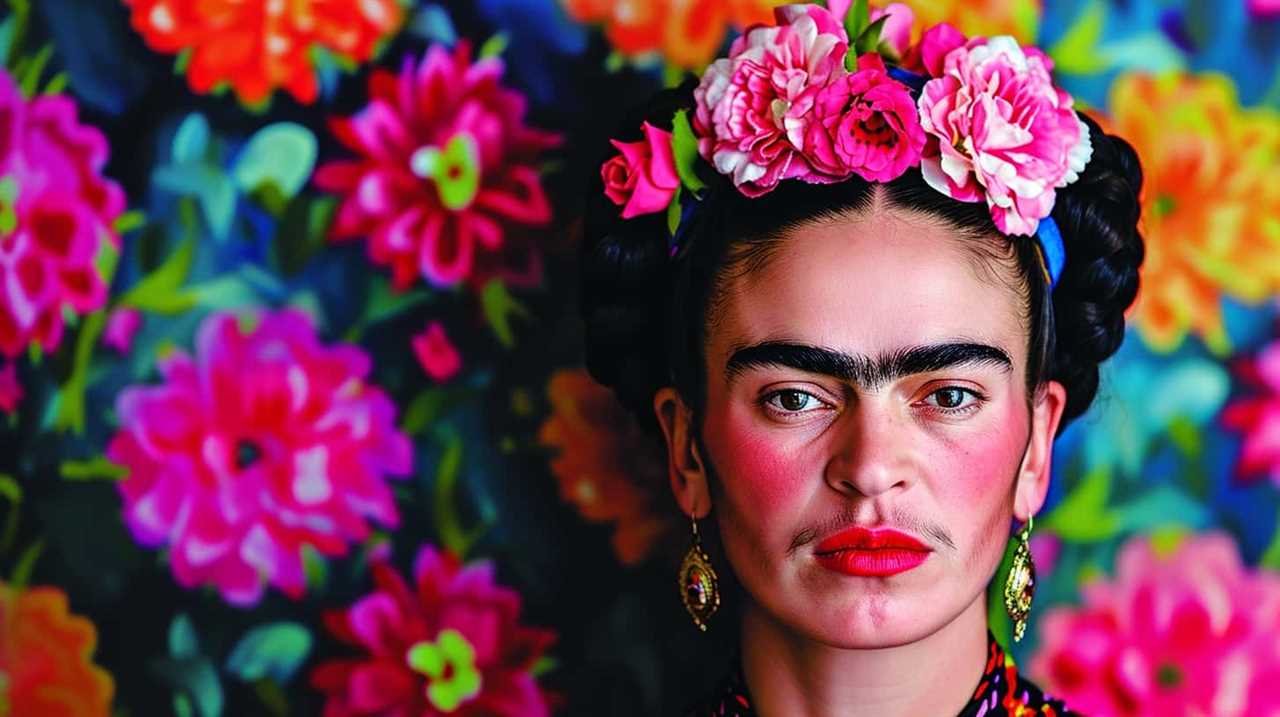
As we delve into the lives of renowned artists and their extraordinary perseverance, we reveal the underlying complexities of their creative paths. By examining their profound words, we achieve a deep comprehension of the reasons behind these artists’ decision to embody resilience in times of adversity.
Symbolizing their indomitable spirit and unwavering commitment to their craft, their words reveal the mastery they desired and the determination that propelled them forward. From Picasso’s perspective on overcoming obstacles to Frida Kahlo’s inner strength in art, and from Van Gogh’s unwavering determination amid adversity to Dali’s surreal resilience in his artistic journey, we delve into the minds of these renowned artists.
Join us as we uncover the secrets behind their enduring legacies and the inspiration they offer to those seeking their own artistic mastery.
Key Takeaways
- Artists like Picasso, Kahlo, Van Gogh, Dali, and O’Keeffe embraced resilience to overcome challenges in their artistic journeys.
- These artists believed in constant growth, adaptation, and pushing boundaries to evolve and transform their art.
- Their impact and influence on the art world is lasting, inspiring artists and art enthusiasts worldwide.
- Through their personal experiences, these artists found resilience in embracing pain, trauma, and societal norms, using art as a transformative power.
Picasso’s Perspective on Overcoming Challenges
In overcoming challenges, Picasso believed in embracing constant growth and adaptation. Throughout his career, Picasso’s artistic evolution was marked by a relentless pursuit of innovation and experimentation. He constantly pushed the boundaries of traditional art forms, challenging the status quo and redefining the possibilities of artistic expression.

Picasso’s ability to adapt and evolve can be seen in his various artistic periods. From the Blue Period, characterized by melancholic and somber tones, to the Cubist movement, where he fragmented objects and depicted them from multiple perspectives, Picasso’s artistic style constantly evolved and transformed.
One of the key factors that influenced Picasso’s artistic evolution was his exposure to different cultures and art forms. His travels and interactions with artists from around the world opened his eyes to new techniques and perspectives, which he incorporated into his own work. Picasso was never afraid to embrace change, and he believed that it was through constant growth and adaptation that artists could truly reach their full potential.
In contrast to Picasso’s focus on artistic evolution, another renowned artist, Frida Kahlo, found solace and inspiration in her personal struggles. Kahlo’s art was deeply intertwined with her experiences of pain, physical ailments, and emotional turmoil. Through her art, she expressed her innermost emotions and confronted her personal demons.
Kahlo’s art served as a means of catharsis, allowing her to find healing and empowerment in the face of adversity. Her paintings often depicted her physical and emotional pain, as well as her Mexican heritage and cultural identity. Kahlo’s art resonated with many individuals who saw themselves reflected in her struggles and triumphs.

Both Picasso and Kahlo exemplify the power of art in overcoming challenges. While Picasso embraced constant growth and adaptation, Kahlo drew strength from her personal struggles. Their unique approaches demonstrate that there’s no one-size-fits-all method for overcoming obstacles. Instead, it’s through embracing our own experiences and utilizing our artistic abilities that we can find resilience and create meaningful works of art.
Frida Kahlo’s Inner Strength in Art
While Picasso focused on artistic evolution, Frida Kahlo, on the other hand, drew strength from her personal struggles in her art. Frida Kahlo’s artistic inspiration stemmed from the profound impact of pain in her life. Her paintings were a reflection of her innermost emotions and experiences, allowing her to find solace and resilience in her artwork.
Kahlo’s art was deeply influenced by the physical and emotional pain she endured throughout her life. From a young age, she suffered from a multitude of health issues, including polio and a near-fatal bus accident that left her with lifelong physical disabilities. These experiences shaped her perception of the world and became a central theme in her art.
Kahlo’s paintings often depicted her physical and emotional pain, presenting a raw and honest portrayal of her experiences. Through her art, she found a way to express her emotions and confront her struggles head-on. Her work served as a form of catharsis, allowing her to process her pain and transform it into something beautiful and meaningful.

Van Gogh’s Determination Amid Adversity
Van Gogh’s determination to create art remained unwavering despite facing numerous adversities. His mental health struggles were well-documented, as he battled with depression, anxiety, and even episodes of psychosis. However, these challenges did not deter him from pursuing his artistic vision. In fact, it was during these difficult times that he produced some of his most iconic works, such as "Starry Night" and "The Potato Eaters."
| Van Gogh’s Mental Health Struggles | Picasso’s Artistic Evolution |
|---|---|
| Van Gogh’s mental health issues were a constant presence in his life, affecting both his personal well-being and artistic expression. | Picasso’s artistic evolution can be traced through different periods, each marked by distinct styles and subject matters. |
| Despite his struggles, Van Gogh used art as a form of therapy, pouring his emotions onto the canvas. His vibrant use of color and expressive brushwork reflected his inner turmoil. | Picasso’s early works were heavily influenced by the Blue and Rose periods, characterized by melancholic and introspective themes. Later, he embraced Cubism, revolutionizing the way art was perceived. |
| Van Gogh’s commitment to his craft was unwavering, even in the face of rejection and financial hardships. He continued to paint prolifically, producing over 2,000 artworks in just a decade. | Picasso’s artistic evolution was driven by a constant desire to push boundaries and challenge traditional artistic norms. His experimentation with different styles and mediums showcased his versatility and innovative spirit. |
| Van Gogh’s determination and resilience in the face of adversity continue to inspire artists and art enthusiasts worldwide. His ability to find solace and purpose in art serves as a testament to the transformative power of creativity. | Picasso’s artistic evolution serves as a reminder that artists are not bound by one style or subject matter. Instead, they have the freedom to explore and reinvent themselves, constantly pushing the boundaries of their own creativity. |
Van Gogh’s unwavering determination to create art, despite his mental health struggles, is a testament to his resilience and passion for his craft. His ability to find solace and purpose in art serves as an inspiration to artists and art enthusiasts worldwide. Similarly, Picasso’s artistic evolution showcases the transformative power of creativity and the freedom artists have to explore and reinvent themselves. Both artists remind us that even in the face of adversity, the pursuit of art can be a source of strength and growth.
Dali’s Surreal Resilience in Artistic Journey
Dali’s artistic determination and the enduring influence of surrealism are key points to consider when discussing his surreal resilience in his artistic journey.
Despite facing criticism and controversy, Dali remained steadfast in his commitment to pushing boundaries and challenging traditional artistic conventions.
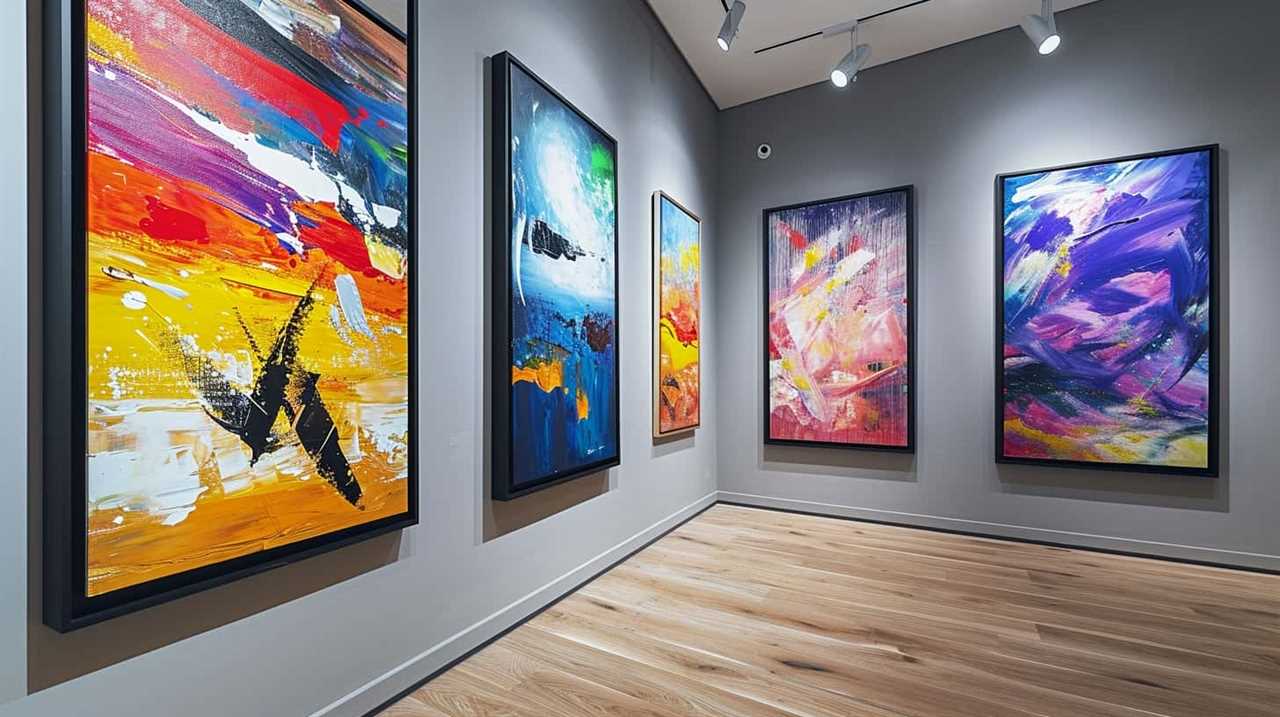
Surrealism, with its emphasis on the subconscious and irrational, continues to captivate audiences and inspire artists to this day.
Salvador’s Artistic Determination
We admire Salvador for his unwavering determination in his surreal artistic journey. His unique artistic style and impact on surrealism are testament to his resilience and unwavering dedication. Here are three aspects of Salvador’s artistic determination that stand out:
- Bold and imaginative imagery: Salvador’s artwork was characterized by dreamlike and bizarre imagery that pushed the boundaries of conventional art. His ability to create fantastical and unsettling scenes captivated audiences and challenged their perceptions of reality.
- Attention to detail: Despite the fantastical nature of his work, Salvador paid meticulous attention to detail. Every brushstroke and element in his paintings served a purpose, contributing to the overall composition and narrative.
- Persistence in the face of criticism: Salvador faced criticism and rejection throughout his career, yet he remained steadfast in his artistic vision. He defied societal norms and pushed the boundaries of art, refusing to conform to expectations.
Salvador’s determination to create art that was truly groundbreaking and thought-provoking continues to inspire artists and art enthusiasts alike.
Surrealism’s Enduring Influence
The enduring influence of surrealism can be seen in the resilience of celebrated artists like Salvador Dali throughout their artistic journeys.

Surrealism, a movement that emerged in the early 20th century, has had a profound impact on contemporary art. Its exploration of the subconscious mind and its ability to create dreamlike and fantastical imagery continue to inspire artists today.
Dali, known for his iconic and often bizarre paintings, embraced the tenets of surrealism in his work. His ability to tap into the depths of the subconscious mind allowed him to create visually stunning and thought-provoking pieces.
Dali’s surreal resilience in his artistic journey demonstrates the lasting impact of surrealism on the art world, as well as its ability to push boundaries and challenge traditional artistic norms.
O’Keeffe’s Resilience in the Face of Criticism
O’Keeffe’s resilience in the face of criticism is evident in her enduring artistic vision and her ability to overcome artistic challenges.

Despite facing criticism for her unique style and subject matter, O’Keeffe remained committed to her artistic vision, creating iconic works that have stood the test of time.
Through her determination and perseverance, she not only proved her critics wrong but also paved the way for future generations of artists to embrace their own unique voices.
O’keeffe’s Enduring Artistic Vision
Throughout her career, Georgia O’Keeffe consistently demonstrated her enduring artistic vision, despite facing criticism. Her ability to persevere and stay true to her artistic vision left an indelible mark on the art world and paved the way for future female artists.
O’Keeffe’s artistic legacy is defined by three key elements:

- Bold use of color: O’Keeffe’s vibrant and intense color palette captured the essence of her subjects, whether it was the delicate petals of a flower or the majestic landscapes of the Southwest. Her mastery of color allowed her to evoke emotions and create a sense of depth and dimension in her paintings.
- Unique perspective: O’Keeffe’s ability to see the extraordinary in the ordinary set her apart from her contemporaries. Whether it was zooming in on the intricate details of a flower or enlarging a landscape to fill the canvas, she brought a fresh and innovative perspective to her art.
- Symbolism and abstraction: O’Keeffe’s work often incorporated symbolism and abstraction, allowing viewers to interpret her paintings in their own unique way. By focusing on the essence of her subjects rather than their literal representation, she challenged traditional artistic conventions and opened up new possibilities for artistic expression.
Despite facing criticism and skepticism, O’Keeffe’s enduring artistic vision has had a profound impact on female artists, inspiring them to embrace their own unique perspectives and push boundaries in their work. Her unwavering dedication to her art serves as a reminder of the importance of resilience and staying true to one’s artistic vision.
Transitioning into the subsequent section about ‘overcoming artistic challenges’, it’s essential to explore how O’Keeffe’s resilience enabled her to overcome the obstacles that she encountered throughout her career.
Overcoming Artistic Challenges
In the face of criticism, we persevered and embraced resilience, overcoming artistic challenges.
O’Keeffe, a celebrated artist known for her unique and vibrant paintings, faced her fair share of obstacles throughout her career. Despite criticism from art critics and societal expectations, she remained committed to her artistic vision and found inspiration through adversity.
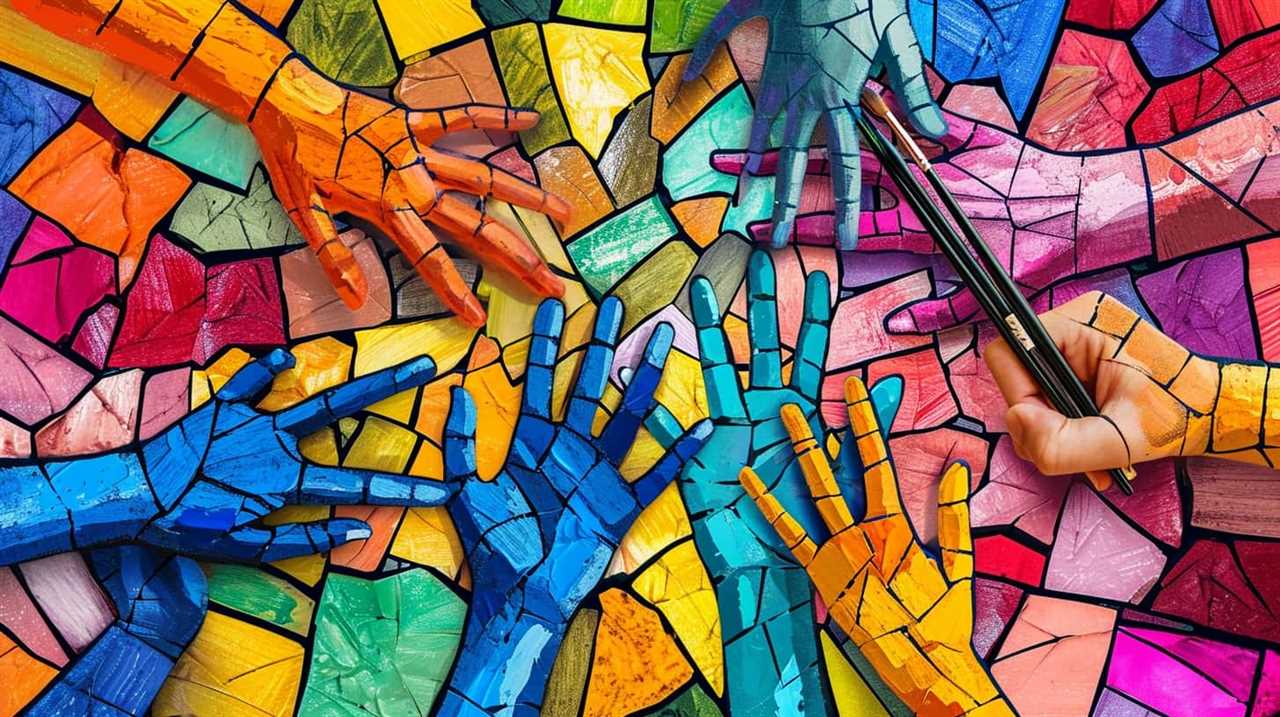
O’Keeffe’s ability to overcome creative obstacles and push through challenges is what set her apart as an artist. She once stated, ‘I have already settled it for myself, so flattery and criticism go down the same drain and I’m quite free.’ This quote exemplifies her resilience in the face of criticism, her unwavering belief in her art, and her ability to find motivation even in the most challenging times.
O’Keeffe serves as an inspiration for artists everywhere, reminding us to stay true to our artistic visions and persevere through adversity.
Basquiat’s Resilience in Breaking Barriers
Basquiat’s resilience in breaking barriers transformed the art world. His impact on contemporary art is undeniable, leaving behind a lasting legacy and influence that continues to resonate today. Here are three key aspects of Basquiat’s resilience that propelled him to break through the boundaries of the art world:
- Unconventional Expression: Basquiat’s artistic style challenged traditional norms and conventions. His use of bold colors, expressive brushstrokes, and incorporation of graffiti elements created a unique visual language that defied categorization. By embracing his individuality and refusing to conform, Basquiat paved the way for a new wave of artistic expression.
- Cultural Commentary: Basquiat’s art was deeply rooted in his experiences as a black artist in America. Through his work, he fearlessly tackled issues of race, identity, and societal injustices. By giving a voice to marginalized communities, Basquiat challenged the status quo and forced viewers to confront uncomfortable truths.
- Collaborative Spirit: Basquiat’s resilience wasn’t just evident in his solo work, but also in his collaborations. He often collaborated with other artists, musicians, and writers, blurring the boundaries between different art forms. This collaborative spirit not only expanded his artistic horizons but also fostered a sense of community and collective resilience within the art world.
In breaking barriers, Basquiat paved the way for a new era of artistic possibilities. His legacy and influence continue to inspire artists to embrace resilience and push the boundaries of creativity.
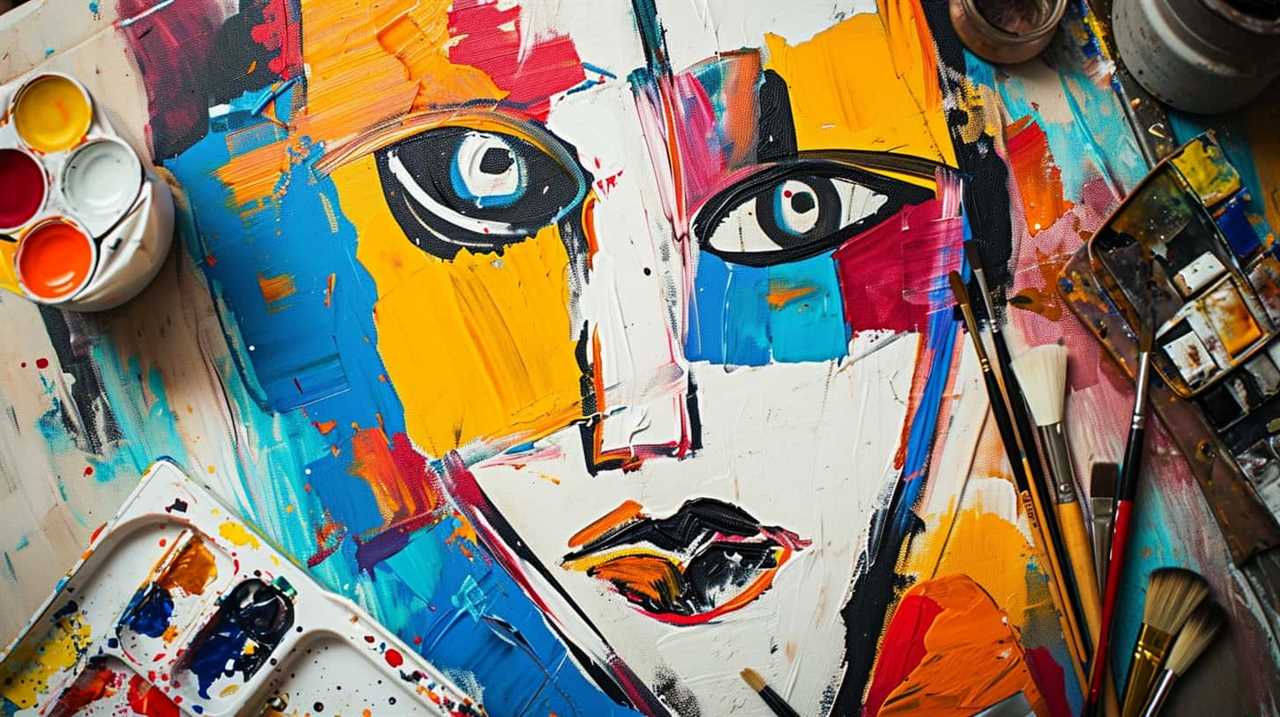
Kahlo’s Resilience in Embracing Pain
Kahlo’s unwavering embrace of her pain defined her artistic journey. Through her use of symbolism, she transformed her physical and emotional suffering into powerful works of art. Kahlo’s paintings are filled with symbols that represent her personal experiences and struggles, such as the broken column symbolizing her shattered spine and the thorny vines symbolizing her emotional turmoil. These symbols not only serve as a means of self-expression but also allow viewers to connect with her pain on a deeper level.
Kahlo’s resilience in embracing her pain has had a profound influence on contemporary artists. Many artists today continue to explore themes of pain, trauma, and resilience in their work, inspired by Kahlo’s ability to transform her own pain into art. Her bold and honest approach to depicting her physical and emotional suffering has challenged societal norms and paved the way for artists to address difficult and uncomfortable subjects.
Transitioning into the subsequent section about Warhol’s resilience in the pop art movement, it’s important to note that while Kahlo’s art focused on personal pain, Warhol’s resilience was manifested in his ability to challenge traditional notions of art and embrace popular culture.
Warhol’s Resilience in the Pop Art Movement
We admired Warhol’s resilience as he revolutionized the art world through his bold embrace of popular culture in the Pop Art movement. Warhol’s influence on pop culture can’t be overstated, as his iconic art style continues to inspire and captivate audiences to this day.
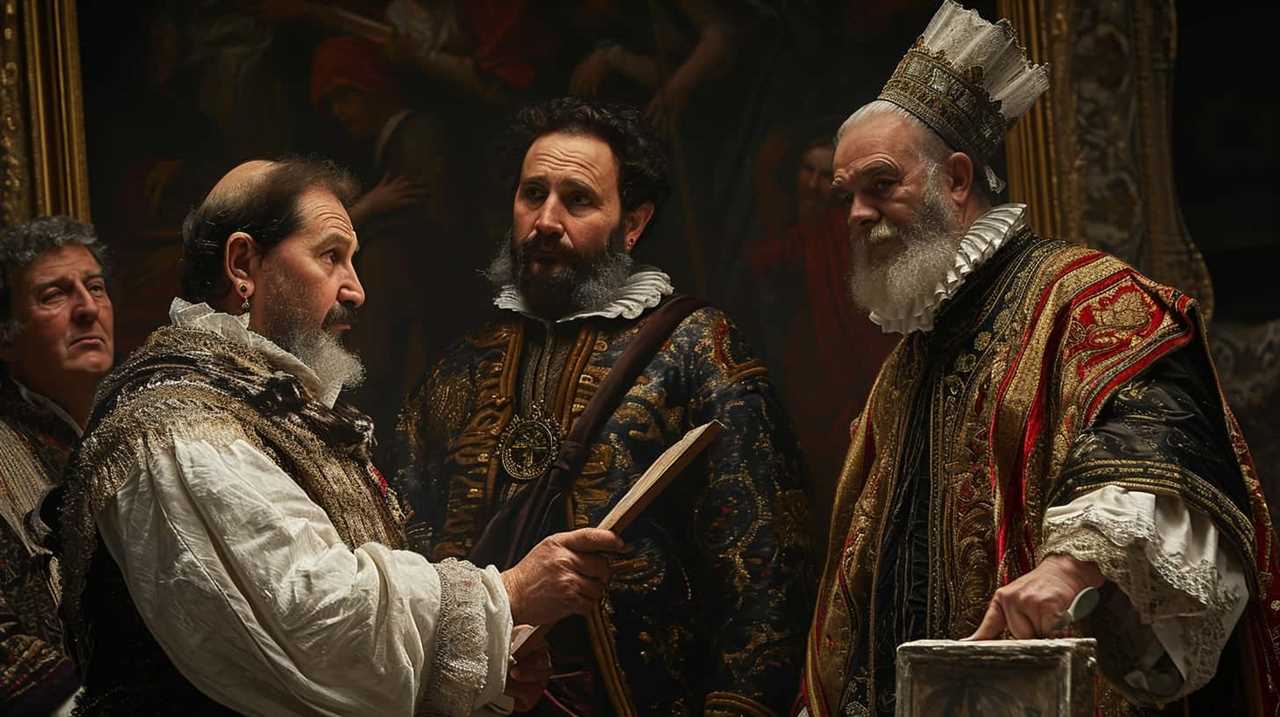
Here are three aspects of Warhol’s resilience that made him a trailblazer in the art world:
- Embracing mass production: Warhol challenged the traditional notion of art by incorporating everyday objects and images into his work. His use of screen printing techniques allowed him to produce multiple copies of his artworks, blurring the boundaries between high and low art.
- Celebrating consumerism: Warhol’s art celebrated the consumer culture of post-war America. Through his iconic images of Campbell’s soup cans, Coca-Cola bottles, and celebrities like Marilyn Monroe, he commented on the power of advertising and the commodification of popular culture.
- Embracing controversy: Warhol’s art often courted controversy and pushed boundaries. His provocative and sometimes controversial subjects challenged societal norms and forced viewers to confront uncomfortable truths about fame, consumerism, and the impact of mass media.
Warhol’s resilience in the face of criticism and his willingness to embrace new ideas and challenge the status quo cemented his place as one of the most influential artists of the 20th century.
Transitioning into the subsequent section about Monet’s resilience in capturing light and nature…
Monet’s Resilience in Capturing Light and Nature
Transitioning from Warhol’s resilience in the Pop Art movement, Monet’s resilience in capturing light and nature is equally remarkable. Monet, a French Impressionist painter, was known for his ability to beautifully depict the play of light and its effects on nature. His art was a reflection of his deep appreciation for capturing nature’s beauty and his artistic inspiration from light.
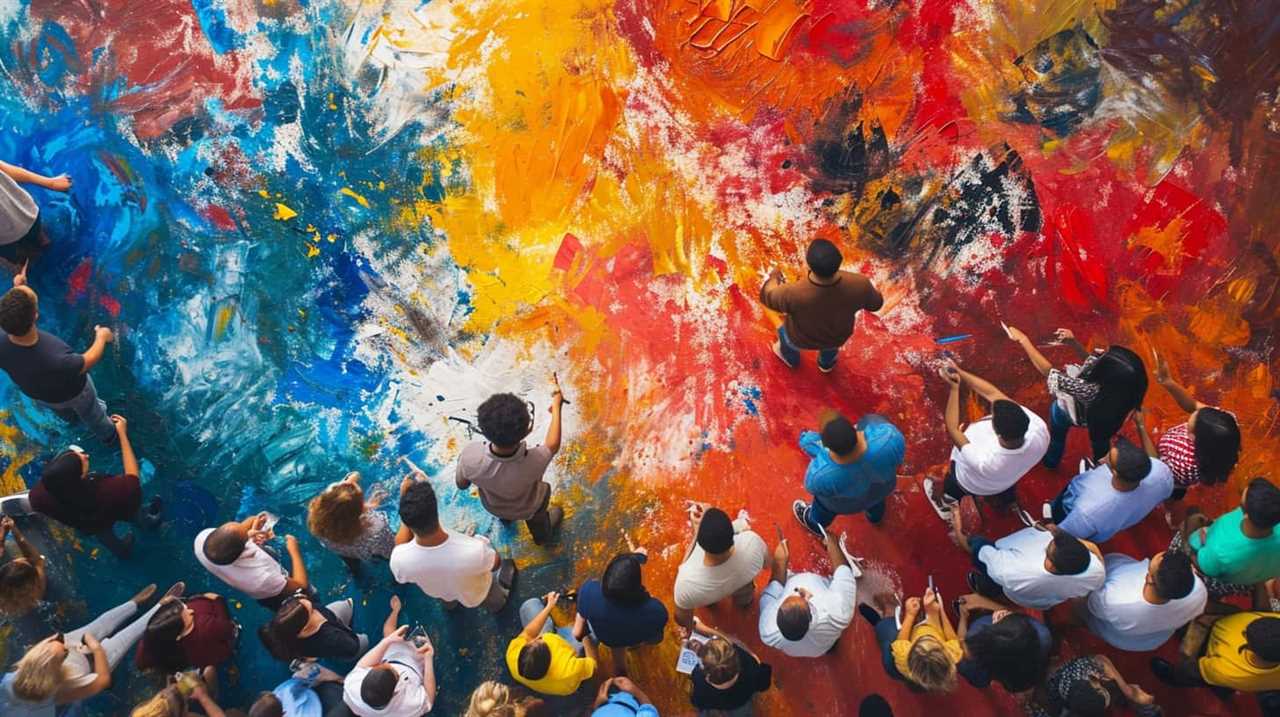
Monet’s paintings often featured landscapes, water lilies, and gardens, with an emphasis on the transient qualities of light. He would spend hours observing the changing colors and tones as the light shifted throughout the day. This meticulous attention to detail allowed him to create vivid and immersive scenes that transported viewers into the natural world.
To illustrate Monet’s incredible talent for capturing light and nature, let’s take a look at a table showcasing some of his most renowned works:
| Painting Title | Description |
|---|---|
| "Impression, Sunrise" | Depicts a hazy harbor scene with the sun rising |
| "Water Lilies" | Shows a serene pond with floating water lilies |
| "Haystacks" | Portrays haystacks at different times of the day |
Monet’s resilience in his artistic pursuit allowed him to create timeless masterpieces that continue to inspire and captivate audiences to this day. His ability to harness the power of light and convey the essence of nature through his brushstrokes is a testament to his unwavering dedication and artistic vision.
Frequently Asked Questions
How Did Picasso’s Perspective on Overcoming Challenges Influence His Artistic Style?
Picasso’s perspective on overcoming challenges greatly influenced his artistic style, leading to his artistic evolution and his immense influence on modern art. His ability to embrace resilience allowed him to experiment with different techniques and push the boundaries of traditional art.
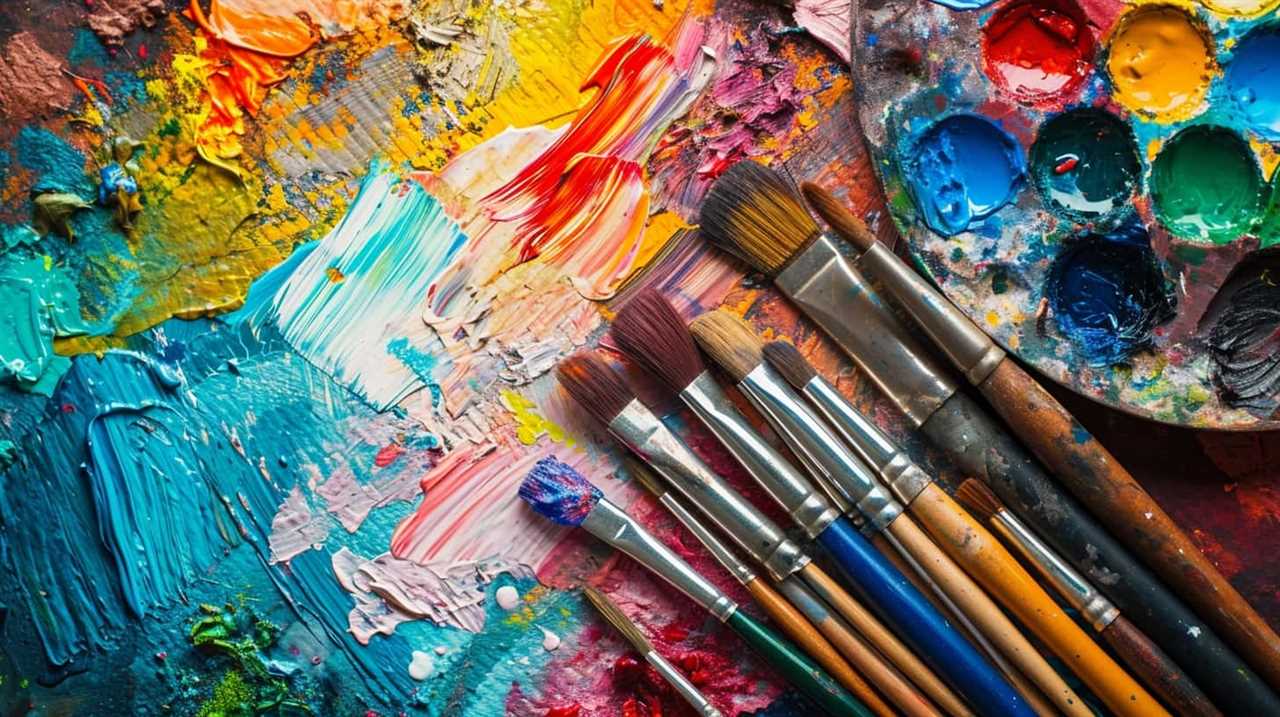
What Personal Experiences Contributed to Frida Kahlo’s Inner Strength in Her Artwork?
Frida Kahlo’s inner strength in her artwork was shaped by her personal experiences. These experiences, such as her physical and emotional pain, served as a source of inspiration and influenced contemporary artists who admire her resilience.
How Did Van Gogh’s Determination Help Him Overcome the Adversity He Faced in His Life and Career?
Van Gogh’s determination played a vital role in overcoming the adversity he faced in his life and career. Despite his struggles with mental health, he channeled his emotions into his artistic techniques, creating masterpieces that continue to inspire and resonate with audiences today.
In What Ways Did Dali’s Surreal Resilience Shape His Artistic Journey?
Dali’s surreal resilience played a significant role in shaping his artistic journey. His ability to embrace and overcome adversity allowed him to push the boundaries of traditional art, creating unique and thought-provoking works that continue to captivate audiences.
How Did O’keeffe’s Resilience in the Face of Criticism Impact Her Artistic Development and Success?
O’Keeffe’s resilience in the face of criticism greatly impacted her artistic development and success. By not letting negative feedback deter her, she was able to stay true to her artistic vision and push boundaries, ultimately achieving mastery in her craft.
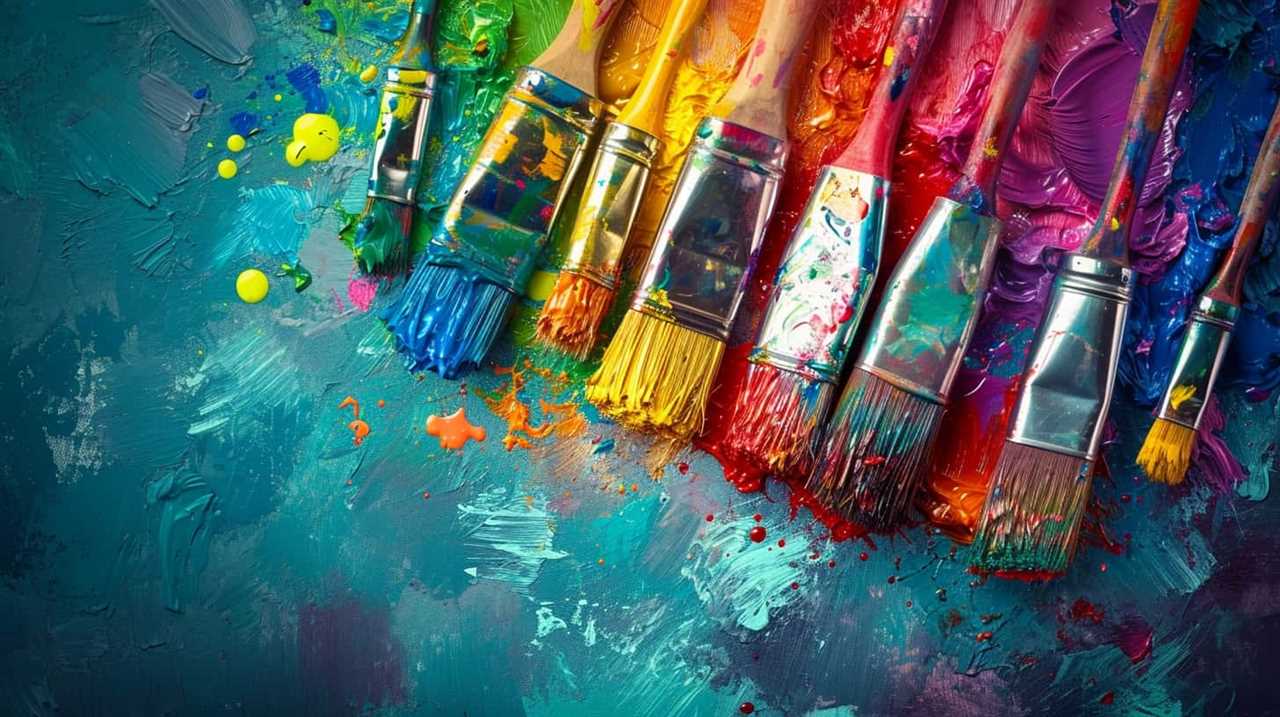
Conclusion
In conclusion, the celebrated artists discussed in this article demonstrate the power of resilience in the face of various challenges. Through their quotes and artistic journeys, Picasso, Kahlo, Van Gogh, Dali, O’Keeffe, Basquiat, Warhol, and Monet inspire us to embrace our own resilience.
As the adage goes, ‘What doesn’t kill you makes you stronger.’ These artists overcame adversity, criticism, and personal pain, ultimately leaving a lasting impact on the art world and reminding us of the strength that lies within us all.
Lauren’s talent in writing is matched by her passion for storytelling. Her love for books and deep understanding of culture and entertainment add a distinct flavor to her work. As our media and press contact, Lauren skillfully bridges the gap between afterQuotes and the broader media landscape, bringing our message to a wider audience.
Artists Quotations
3 Best Contemporary Painters’ Quotes on Creativity
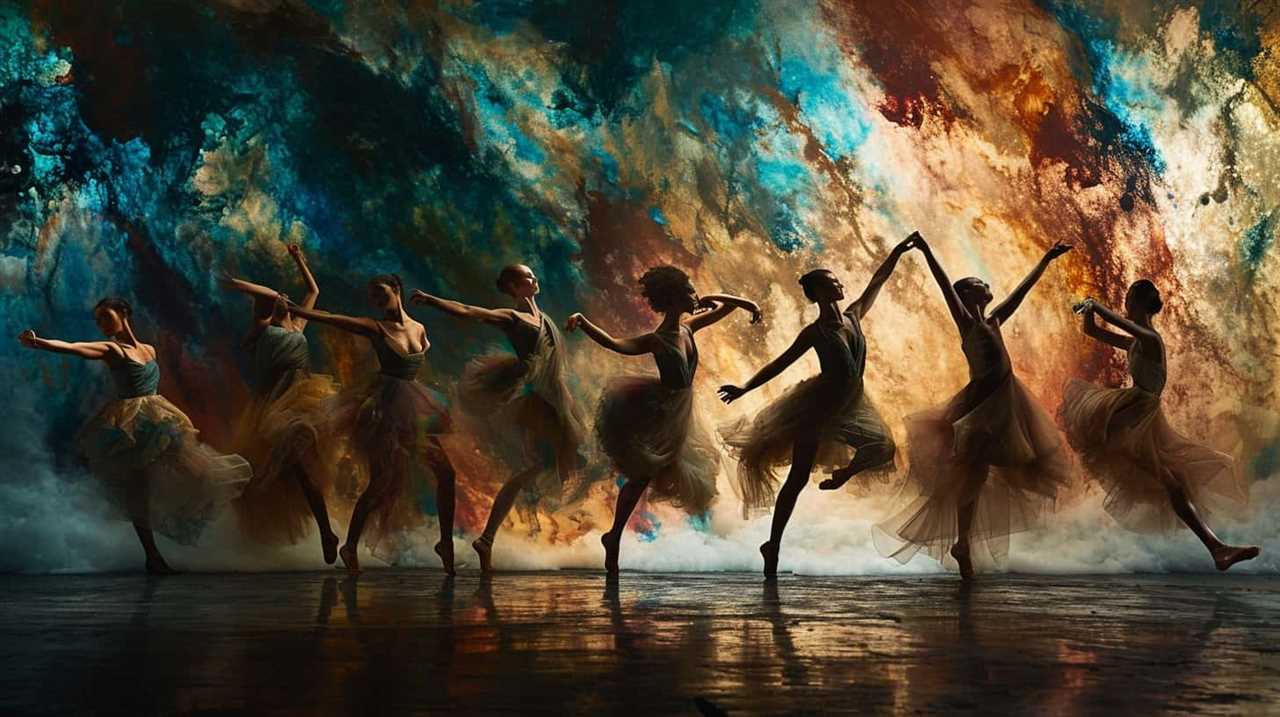
Ladies and gentlemen, I invite you to join me as we explore the creative worlds of the top three modern-day painters.
Their quotes on creativity will ignite the flames of inspiration within us all.
Pablo Picasso, a master of innovation, offers insightful words that delve deep into the realms of artistic brilliance.
Frida Kahlo, a symbol of resilience and self-expression, shares her inspirational quotes that resonate with our souls.
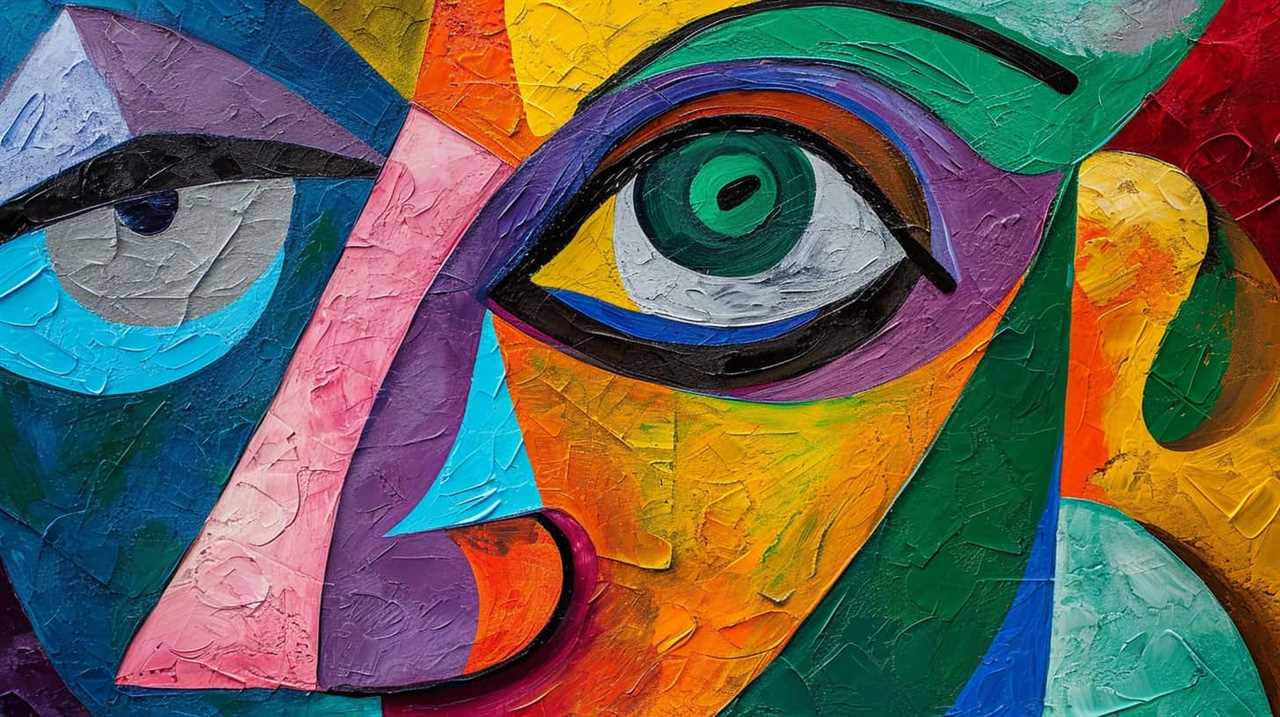
And Banksy, the enigmatic street artist, provokes our thoughts with his profound sayings on creativity and inspiration.
Together, these three painters weave a tapestry of wisdom, guiding us towards the mastery we seek.
Join us as we explore their captivating quotes and unlock the secrets of creativity.
Key Takeaways
- Picasso and Kahlo’s ability to fuse different styles and genres showcases their versatility in their artwork.
- Both Picasso and Kahlo inspired countless artists to explore new artistic possibilities and embrace their own unique perspectives.
- Banksy’s art served as a powerful tool for social commentary and inspired many artists to use their art as a means of activism.
- Picasso’s use of cubism and Kahlo’s emphasis on self-expression and authenticity in art challenged traditional notions of creativity and paved the way for new artistic movements.
Pablo Picasso’s Insightful Words on Creativity
One of our favorite insights on creativity comes from Pablo Picasso, who once said, ‘Every act of creation is first an act of destruction.’ Picasso’s words encapsulate the essence of his artistic techniques and his profound influence on modern art. Known for his innovative approach, Picasso revolutionized the art world with his bold experimentation and willingness to break traditional boundaries.
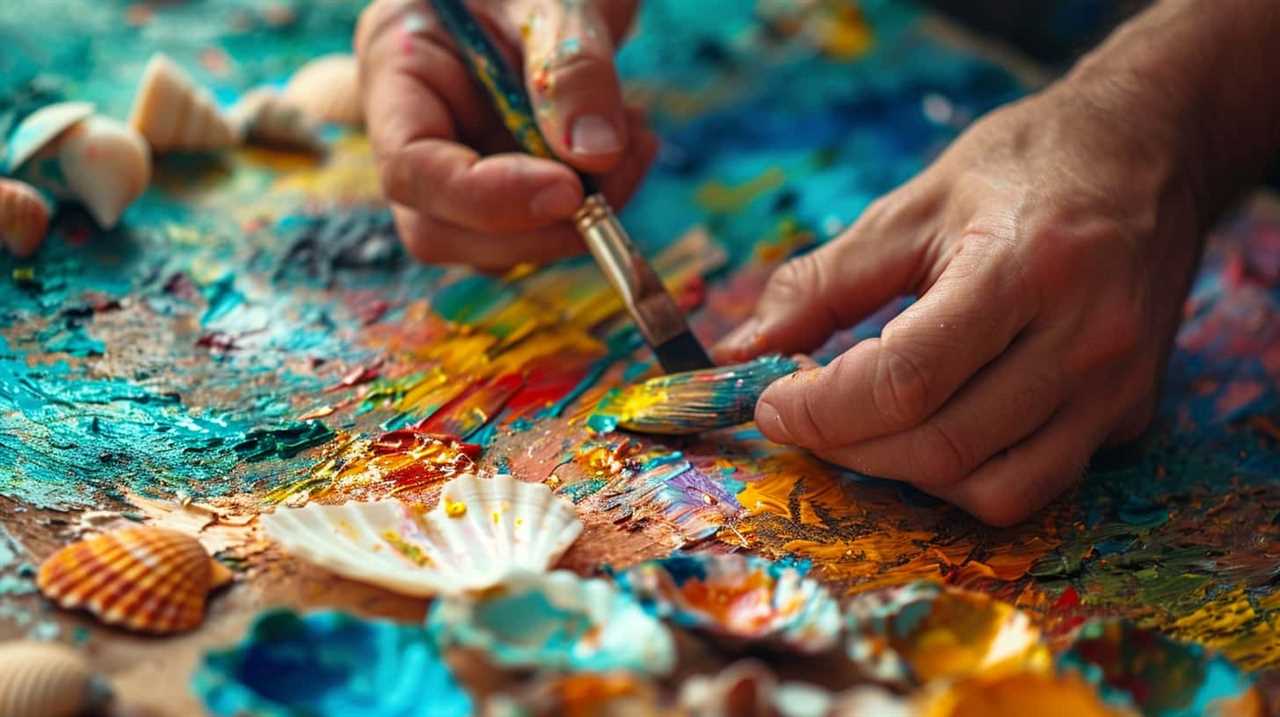
Picasso utilized various artistic techniques to challenge the status quo and push the boundaries of creativity. His use of cubism, for example, shattered the conventional notions of perspective and representation. By deconstructing objects and figures into geometric forms, Picasso aimed to depict multiple viewpoints simultaneously, adding a new dimension to the art world.
Moreover, Picasso’s influence on modern art is immeasurable. He not only inspired countless artists to explore new artistic possibilities but also paved the way for abstract expressionism and other avant-garde movements. His ability to fuse different styles and genres, whether it be African art, classical painting, or surrealism, showcased his versatility and forever changed the trajectory of art history.
Frida Kahlo’s Inspirational Quotes on Artistic Expression
In our exploration of ‘Best Contemporary Painters’ Quotes on Creativity’, we now turn our attention to the inspiring quotes on artistic expression by Frida Kahlo. Known for her vibrant and emotive artwork, Kahlo’s words offer a unique perspective on the power of art to convey emotions and tell stories.
- ‘I paint self-portraits because I’m so often alone, because I’m the person I know best.’
- ‘I paint flowers so they’ll not die.’
- ‘I am my own muse, I’m the subject I know best. The subject I want to know better.’
- ‘I paint my own reality. The only thing I know is that I paint because I need to, and I paint whatever passes through my head without any other consideration.’
- ‘I never painted dreams. I painted my own reality.’
In these quotes, Kahlo emphasizes the importance of self-expression and authenticity in art. She believed in using art as a means to explore her own experiences and emotions, often turning to self-portraits as a way to understand herself better.

Kahlo’s words echo Salvador Dali’s surrealistic musings on the power of imagination and Vincent van Gogh’s profound reflections on the connection between art and emotion. Through her art and words, Kahlo invites us to embrace our own unique perspectives and to use art as a vehicle for self-discovery and expression.
Banksy’s Thought-Provoking Sayings on Creativity and Inspiration
Continuing our exploration of inspiring quotes on artistic expression, let’s now delve into Banksy’s thought-provoking sayings on creativity and inspiration.
Banksy, the elusive street artist whose true identity remains a mystery, has become a cultural phenomenon with his unique style and powerful messages. His influence on the art world is undeniable, as he’s brought street art into the mainstream and challenged traditional notions of creativity.
Banksy’s sayings on creativity and inspiration reflect his rebellious and subversive nature. He believes that art should be a means of questioning and challenging the status quo, rather than simply existing for decorative purposes. One of his most famous quotes, ‘Art should comfort the disturbed and disturb the comfortable,’ encapsulates his approach to art as a powerful tool for social commentary and change.
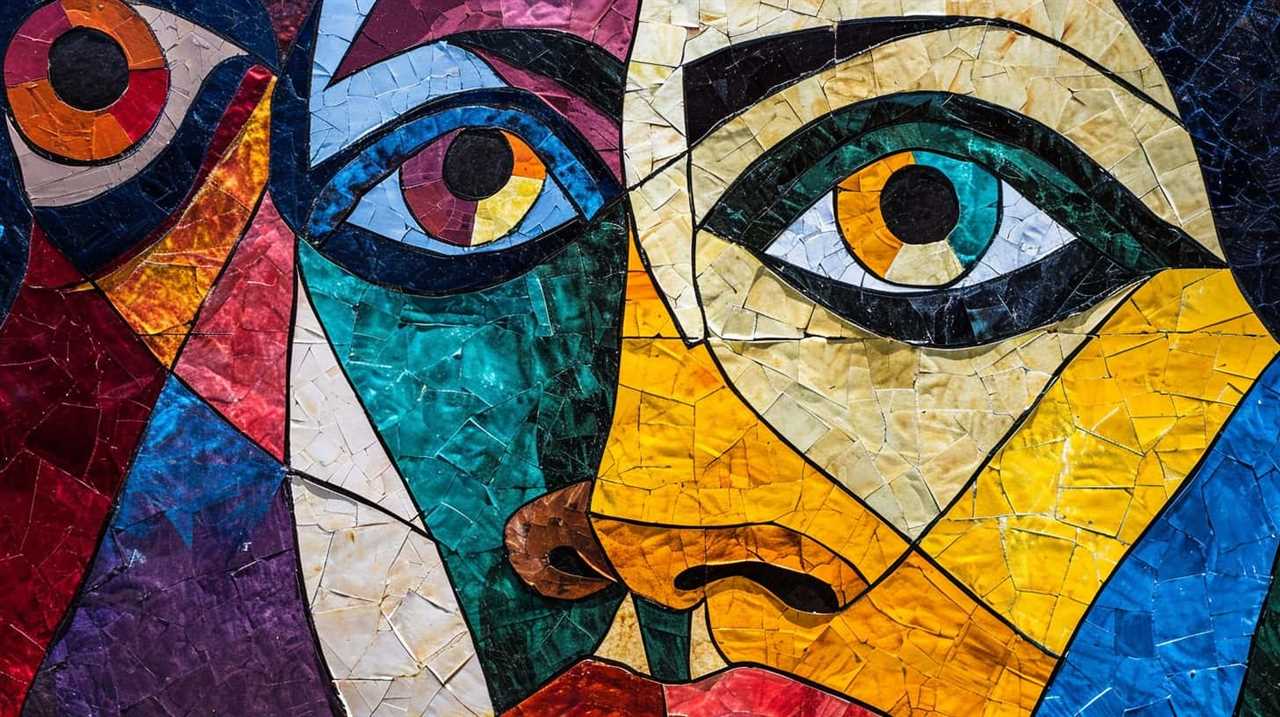
Through his stencils and murals, Banksy has sparked a street art revolution, transforming the urban landscape into a canvas for thought-provoking messages. His works often depict political and social issues, shedding light on injustices and inequalities in society. Banksy’s ability to combine creativity with a strong social conscience has made him a source of inspiration for many artists who seek to use their art as a means of activism.
Frequently Asked Questions
What Is the Significance of Pablo Picasso’s Blue Period in Relation to His Views on Creativity?
The significance of Picasso’s Blue Period lies in its exploration of human suffering and melancholy. This period reflects Picasso’s deep understanding of the emotional depths of creativity, as he sought to capture the essence of human experience through his art.
How Did Frida Kahlo’s Personal Experiences and Struggles Influence Her Artistic Expression?
Frida Kahlo’s impact and legacy can be traced back to her personal experiences and struggles, which deeply influenced her artistic expression. Her art became a powerful medium for conveying her emotions and exploring themes of identity, pain, and resilience.
What Are Some Examples of Banksy’s Thought-Provoking Artwork That Reflect His Quotes on Creativity and Inspiration?
Some examples of Banksy’s thought-provoking artwork that reflect his quotes on creativity and inspiration include his stencil of a girl with a heart-shaped balloon and his depiction of a protester throwing a bouquet of flowers. Frida Kahlo’s personal experiences and struggles influenced her artistic expression through her use of vibrant colors and symbolic imagery.

How Did Pablo Picasso’s Upbringing and Early Life Experiences Shape His Perspective on Creativity?
Pablo Picasso’s childhood influences and early art experiences played a significant role in shaping his perspective on creativity. These formative years shaped his unique artistic style and revolutionary approach to art, setting him apart as one of the most influential painters of the 20th century.
Can You Provide Specific Instances Where Frida Kahlo’s Quotes on Artistic Expression Have Influenced Other Contemporary Artists?
Frida Kahlo’s quotes on artistic expression have greatly influenced contemporary artists. Her interpretation of artistic expression, rooted in her personal struggles and experiences, has inspired a new generation to explore unique perspectives and push the boundaries of creativity.
Conclusion
In conclusion, the quotes from these contemporary painters provide insightful and inspirational perspectives on creativity.
Picasso’s words encourage us to embrace mistakes and take risks in our artistic endeavors.
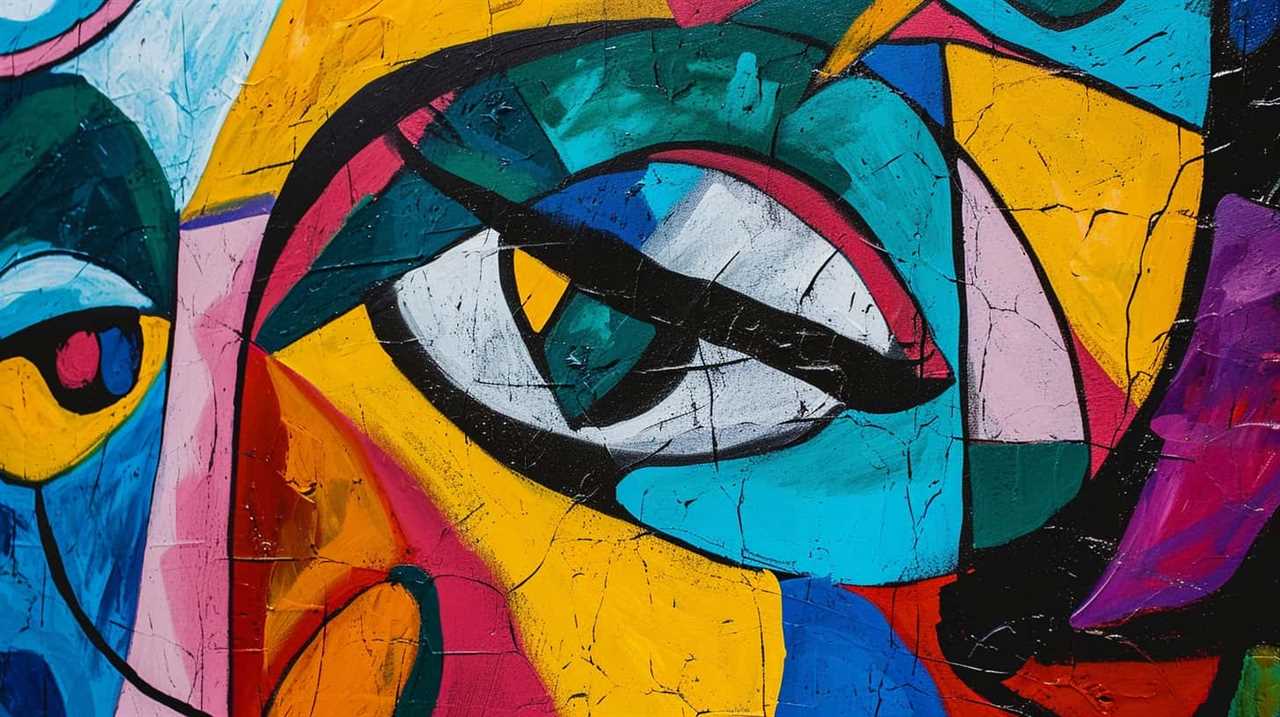
Kahlo’s quotes emphasize the importance of expressing our true selves through art.
And Banksy’s sayings provoke thought and inspire us to think outside the box.
These painters’ words serve as a reminder of the limitless possibilities and power of creativity, making them a must-read for any aspiring artist.
Lauren’s talent in writing is matched by her passion for storytelling. Her love for books and deep understanding of culture and entertainment add a distinct flavor to her work. As our media and press contact, Lauren skillfully bridges the gap between afterQuotes and the broader media landscape, bringing our message to a wider audience.
Artists Quotations
10 Best Quotes on Art’s Emotional Influence

Art has a profound impact on our emotions, a truth that may not be apparent to all. It acts as a channel, guiding us through a variety of emotional landscapes, captivating and greatly impacting us.
In the world of art, emotions are not just depicted, but they are felt. Through the strokes of a brush or the notes of a melody, artists have the power to evoke deep emotions within us.
In this collection of the 10 best quotes on art’s emotional influence, we explore the transformative nature of art and its ability to stir our souls. Join us as we delve into the emotional resonance of art and discover the role it plays in expressing and capturing the essence of human emotion.
Key Takeaways
- Art evokes profound feelings and has the ability to touch our souls.
- Art therapy provides a safe space for emotional exploration and helps individuals gain insights into their thoughts and feelings.
- Art allows individuals to connect with their innermost emotions and bypasses the limitations of language.
- Art fosters empathy and understanding, creating a powerful tool for emotional expression and connection.
The Power of Art’s Emotional Impact
The power of art’s emotional impact is undeniable, as it moves us and evokes profound feelings within us. Art has the ability to touch our souls, to heal our emotional wounds, and to bring about a sense of calm and clarity. This is where art therapy comes into play.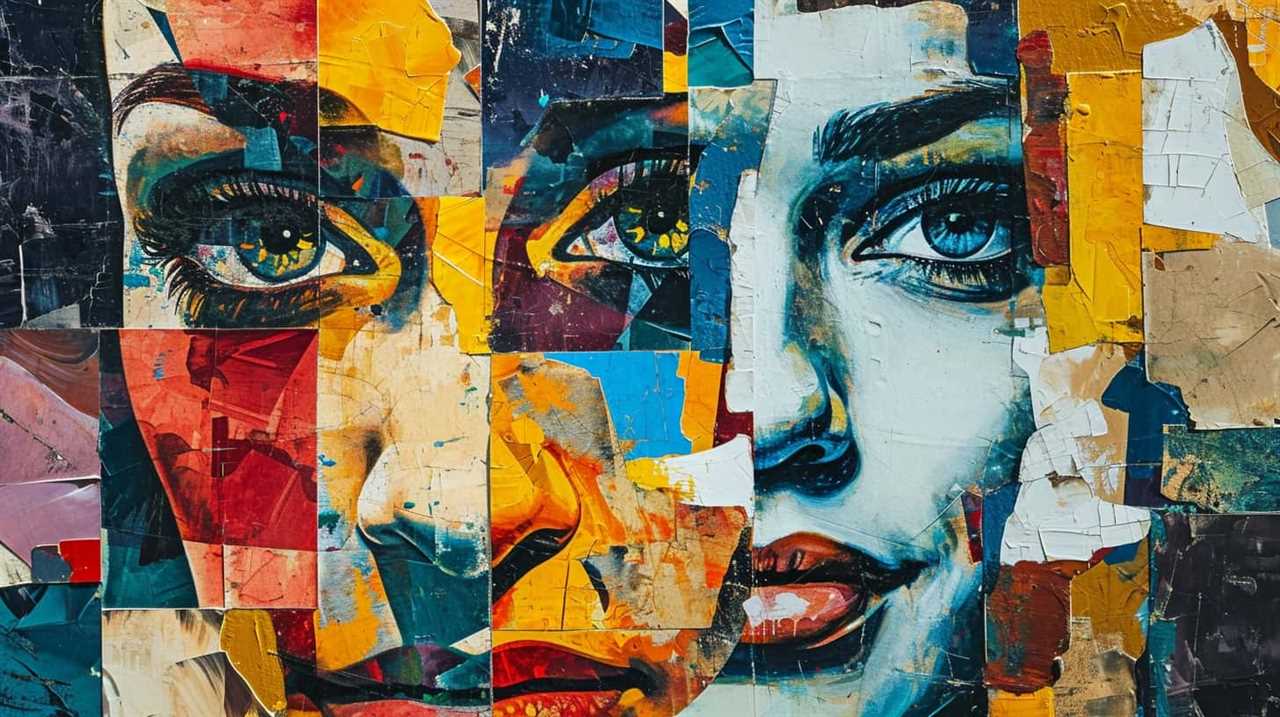
Art therapy is a form of therapy that uses the creative process of making art to improve a person’s mental, emotional, and physical well-being. It provides a safe space for individuals to explore their emotions, express themselves, and find healing through the act of creating art.
Art has been used as a tool for emotional healing for centuries. It allows individuals to externalize their internal struggles, giving them a tangible representation of their emotions. Through the process of creating art, individuals can gain insights into their own thoughts and feelings, leading to a greater understanding of themselves and their experiences. This self-reflection and self-expression can be cathartic and therapeutic, helping individuals to release pent-up emotions and find relief from emotional pain.
Art therapy is particularly effective for individuals who may struggle to verbalize their emotions. By engaging in the creative process, individuals can bypass the need for words and communicate their innermost feelings through visual imagery. This can be especially helpful for individuals who’ve experienced trauma or who find it difficult to express themselves verbally.
In addition to providing an outlet for emotional expression, art therapy also offers a sense of control and empowerment. Individuals can choose the colors, materials, and techniques they use in their artwork, giving them a sense of agency over their own healing process. This sense of control can be incredibly empowering and can help individuals to regain a sense of autonomy and self-confidence.
Art as a Gateway to the Soul
Through art therapy, we’ve experienced how art serves as a transformative gateway, allowing us to delve deep into the essence of our souls and connect with our innermost emotions. Art therapy, a form of psychotherapy that utilizes the creative process of making art, has been proven to be a powerful tool for emotional healing. It provides a safe space for individuals to express and explore their feelings, often leading to profound insights and personal growth.
Art has the ability to bypass the limitations of language and tap into the subconscious mind. It allows us to communicate and process emotions that may be difficult to express verbally. The act of creating art itself can be therapeutic, as it engages both the mind and the body, promoting relaxation and stress reduction.
In art therapy sessions, a variety of art materials and techniques are used to facilitate self-expression and reflection. This can include painting, drawing, sculpting, and even digital art. The process of creating art allows individuals to externalize their internal experiences, making them more tangible and easier to process. It also provides a sense of control and empowerment, as individuals can manipulate and transform their artwork as they see fit.
Art therapy has been shown to be effective in a wide range of populations, including children, adolescents, and adults. It has been used to address various emotional issues, such as trauma, grief, anxiety, and depression. The transformative power of art therapy lies in its ability to tap into the inherent creativity within each individual, allowing them to access their innermost thoughts and emotions.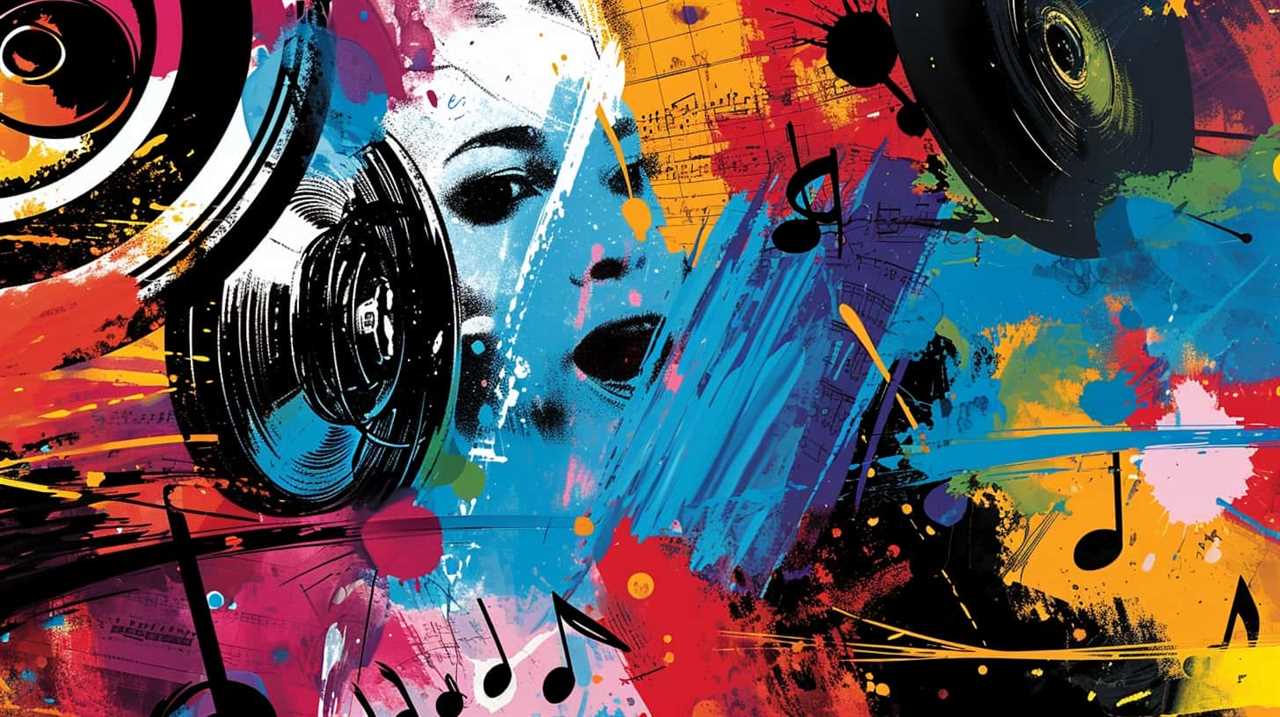
As we explore the topic of ‘Art as a Gateway to the Soul’, we’ll now delve deeper into the ways in which art has the capacity to evoke deep emotions and facilitate profound introspection.
Evoking Deep Emotions Through Art
When it comes to art’s ability to evoke deep emotions, one can’t overlook the power of empathy.
Art has a unique way of allowing us to connect with the experiences and emotions of others, creating a bridge that transcends time, culture, and language.
Through the emotional impact of art, we’re able to tap into a vast range of feelings, from joy and love to sadness and despair.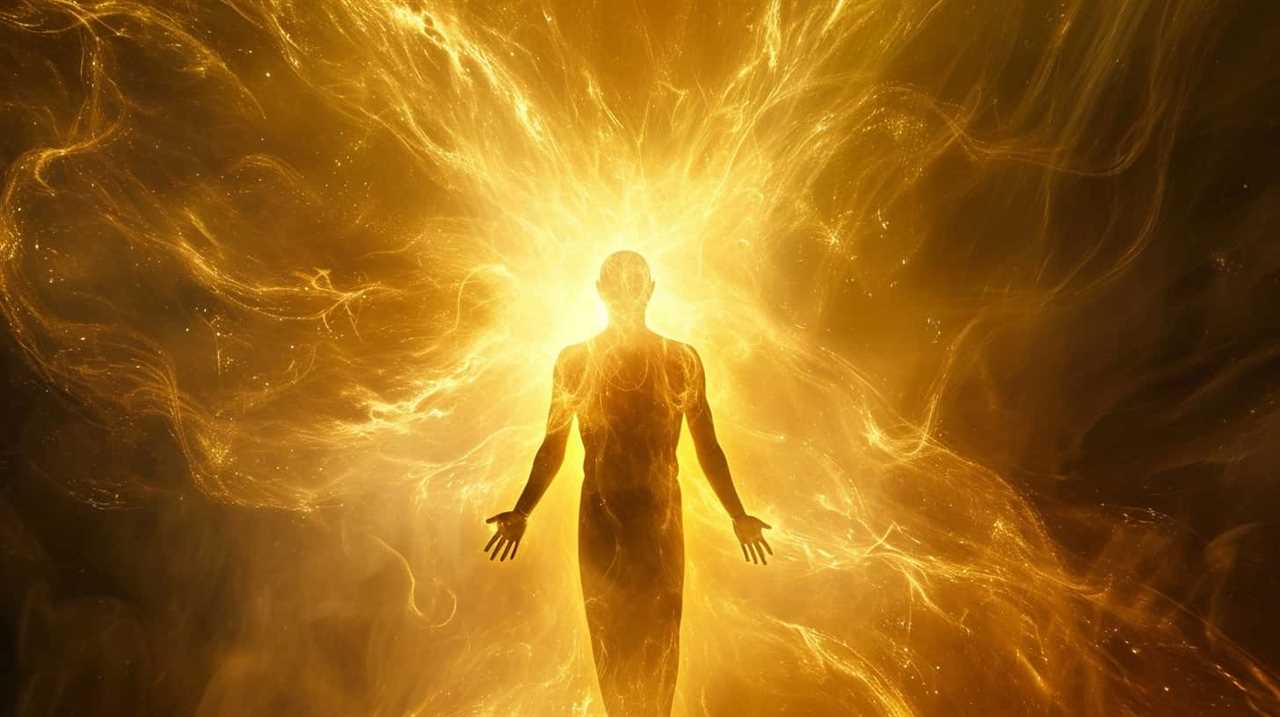
It’s through this connection and expression that art becomes a powerful tool for evoking deep and meaningful emotions within us.
Art and Empathy
Art has the power to evoke deep emotions and foster empathy in us. Through the emotional connection we feel with a piece of art, we are able to tap into our own experiences and understand the emotions of others. This ability to empathize is particularly evident in the field of art therapy, where individuals use art as a means of expressing and processing their emotions.
| Art and Empathy | |
|---|---|
| Art Therapy | Emotional Connection |
| – Utilizes art as a form of therapy to promote healing and self-expression. | – Allows individuals to connect with the emotions depicted in a piece of art. |
| – Provides a safe and non-verbal outlet for individuals to explore their emotions. | – Encourages empathy by fostering an understanding of others’ experiences and emotions. |
| – Enhances emotional awareness and promotes personal growth and healing. | – Strengthens the emotional bond between the artist and the viewer. |
Art has the unique ability to transcend language and cultural barriers, allowing us to connect with others on a deeper level. It provides a platform for expressing complex emotions that may be difficult to articulate verbally. By engaging with art, we expand our capacity for empathy and gain a deeper understanding of the human experience.
Emotional Impact of Art
We are deeply moved by the profound emotional impact that art has on us. Art has the power to evoke deep emotions within us, creating a strong emotional connection that transcends words.
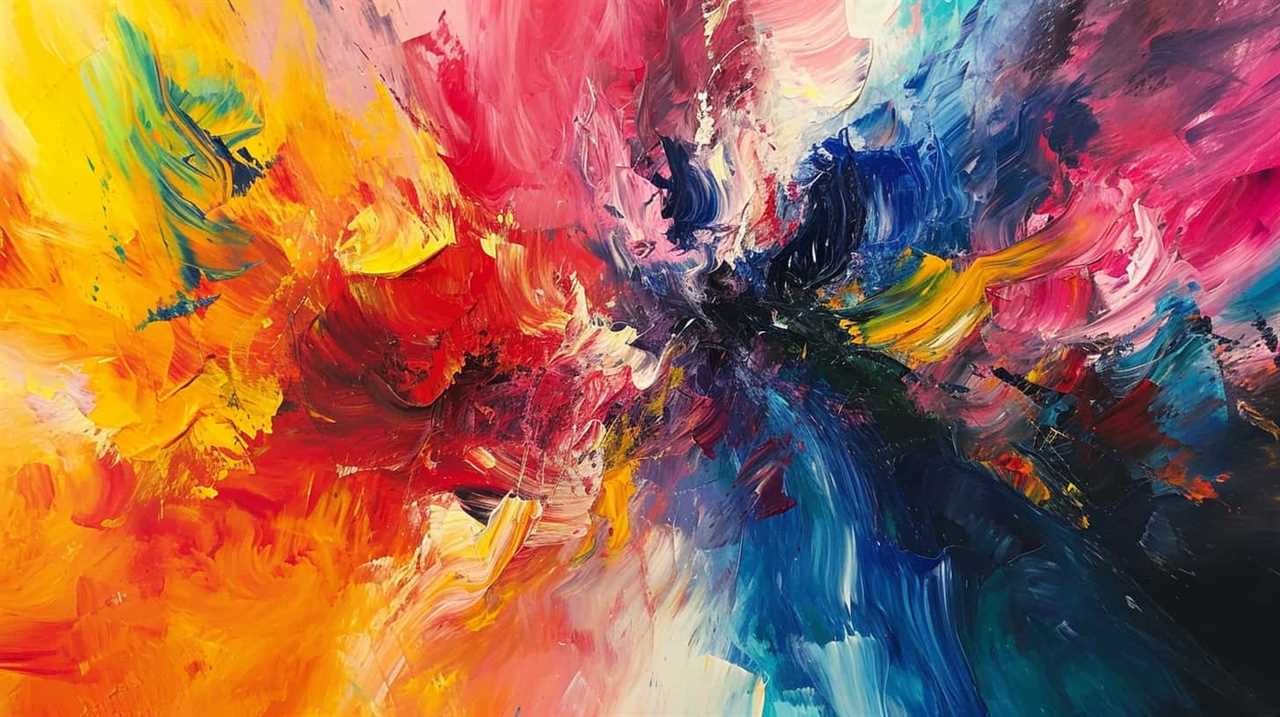
Whether it’s a painting, a sculpture, or a piece of music, art has the ability to stir something within us, to make us feel and experience emotions in a way that nothing else can. This emotional connection is what makes art such a powerful and transformative experience.
In fact, art has been recognized for its therapeutic benefits, as it can help us process and express our own emotions, providing a sense of catharsis and healing. Through art, we’re able to tap into our innermost thoughts and feelings, allowing us to better understand ourselves and the world around us.
Connecting Through Artistic Expression
The profound emotional impact that art has on us continues to be amplified through our ability to connect with others through artistic expression. Art has the power to transcend language barriers and cultural differences, allowing us to communicate and understand one another on a deeper level.
Through art, we can establish an expressive connection with others, sharing our emotions, thoughts, and experiences in a way that words alone can’t convey. Artistic expression serves as a universal language, enabling us to foster empathy, compassion, and understanding amongst individuals from diverse backgrounds.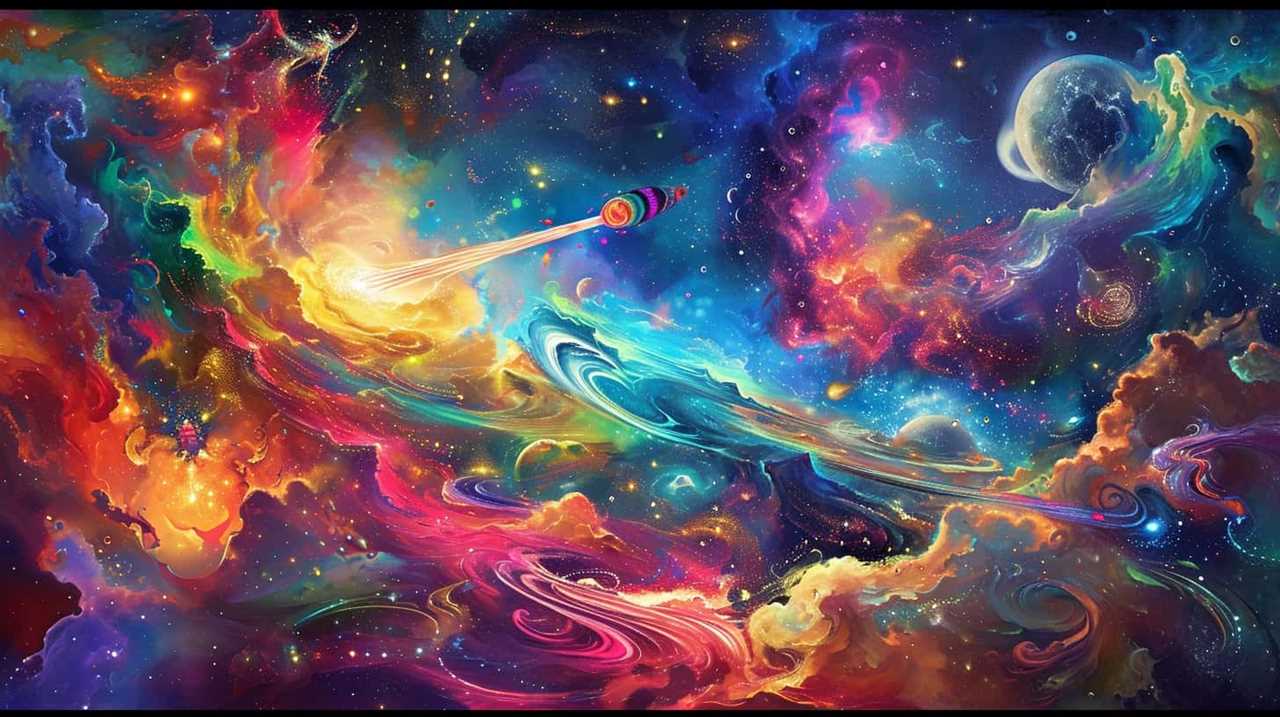
Whether it’s through visual art, music, dance, or literature, art has the ability to evoke deep emotions and tell powerful stories. It provides a platform for emotional storytelling and fosters a sense of unity among humanity.
The Transformative Nature of Art
As we explore the emotional influence of art, it becomes evident that the transformative nature of this creative expression is undeniably powerful. Art has long been recognized for its ability to heal and provide therapeutic benefits to individuals. The healing power of art lies in its ability to tap into our emotions, allowing us to express and process our innermost thoughts and feelings. Whether it’s through painting, sculpture, music, or dance, art provides a safe and non-verbal outlet for self-expression.
Art as a form of therapy has been used for centuries to help individuals cope with various emotional and psychological challenges. Through the process of creating art, individuals are able to externalize their internal struggles and gain a deeper understanding of themselves. This process can be cathartic, helping to release pent-up emotions and providing a sense of relief and liberation.
Moreover, art can also serve as a catalyst for personal growth and transformation. By engaging with art, we’re exposed to new ideas, perspectives, and emotions that can challenge our existing beliefs and expand our understanding of the world. Art has the power to inspire, motivate, and transform us, pushing us to explore our own creativity and potential.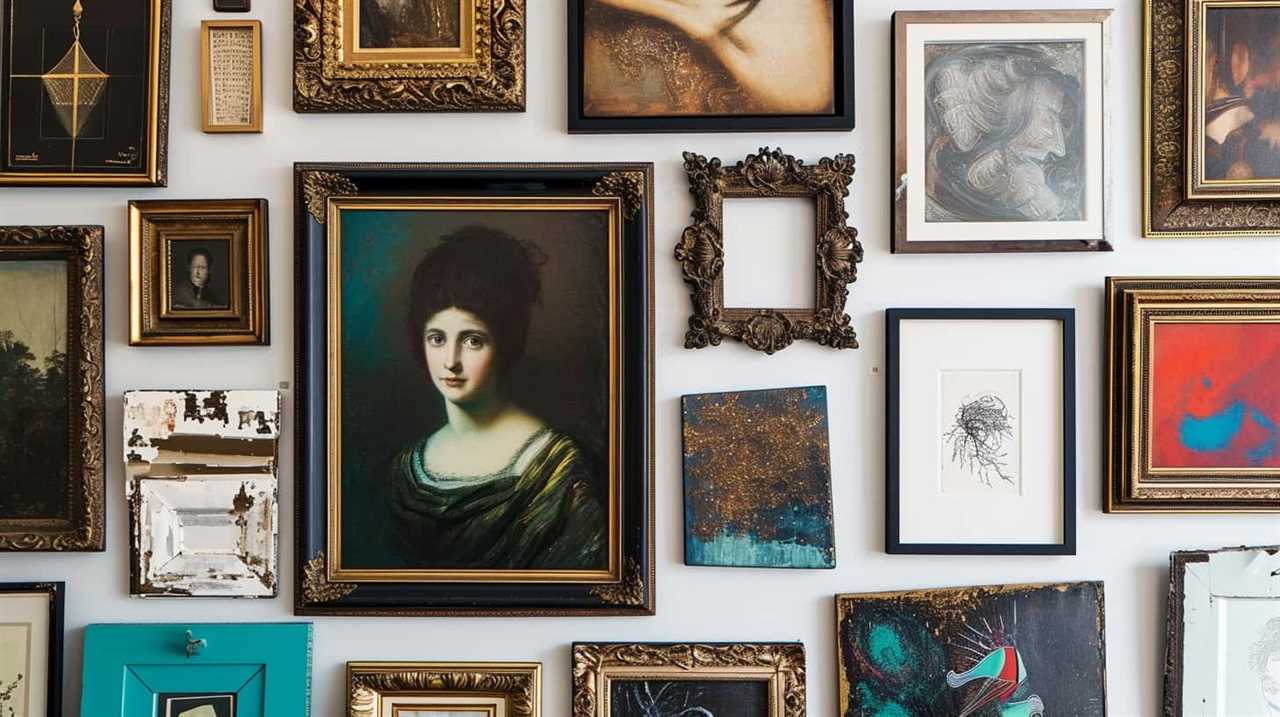
Art’s Ability to Stir Emotions
Art has the power to evoke deep emotions within us. It has the ability to touch our souls, provoke thought, and stir intense feelings. Whether it’s a painting, a sculpture, or a piece of music, art has the potential to elicit a wide range of emotions, from joy and awe to sadness and anger.
One way in which art stirs emotions is through its therapeutic effects. Art therapy, for example, utilizes various art forms to help individuals express and process their emotions. By engaging in artistic activities, individuals can tap into their innermost feelings and gain insight into their emotional state.
Another way art stirs emotions is through emotional catharsis. When we view a powerful piece of art, it has the ability to release pent-up emotions and provide a sense of relief. It allows us to connect with our own emotions and experiences, and provides a safe space for us to explore and confront our innermost thoughts and feelings.
To further illustrate the profound emotional impact of art, consider the following table: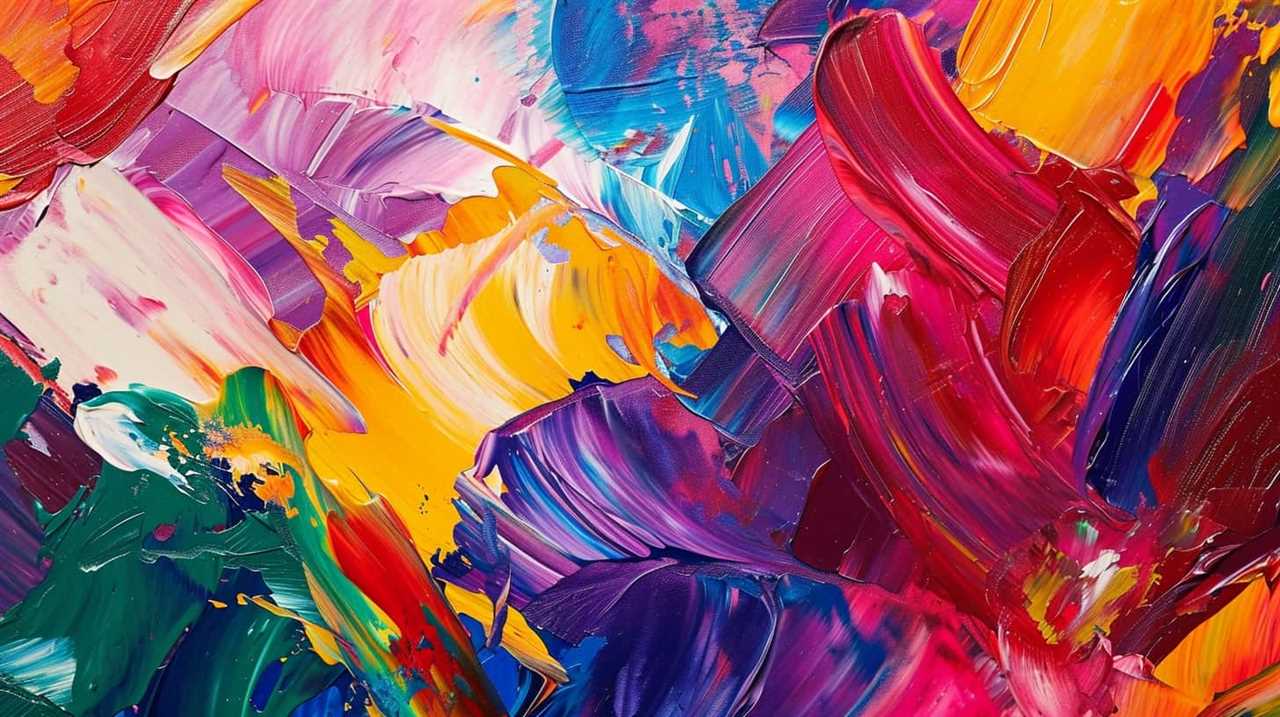
| Art Form | Emotion Evoked | Example |
|---|---|---|
| Painting | Awe | The vibrant colors of Van Gogh’s "Starry Night" leave viewers in awe of nature’s beauty. |
| Sculpture | Sadness | The melancholic expression on Michelangelo’s "David" evokes a sense of sadness and vulnerability. |
| Music | Joy | The uplifting melody of Beethoven’s "Ode to Joy" fills listeners with a sense of pure happiness. |
| Literature | Anger | The powerful words of Maya Angelou’s "Still I Rise" ignite a fire of righteous anger against injustice. |
| Dance | Serenity | The graceful movements of a ballet dancer convey a sense of serenity and inner peace. |
Through art, we are able to tap into our deepest emotions, experience emotional catharsis, and find solace, inspiration, and understanding. It is this ability of art to stir emotions that makes it such a powerful and transformative medium.
The Language of Emotion in Art
When it comes to art, emotions have a language of their own. Through brushstrokes, colors, and forms, art has the power to evoke a wide range of emotions within us.
It serves as a medium for artists to communicate their innermost thoughts and feelings, inviting viewers to connect and engage with their work on a deeper level.
The language of emotion in art is a universal one, transcending barriers of language and culture, and its impact on individuals and society can’t be underestimated.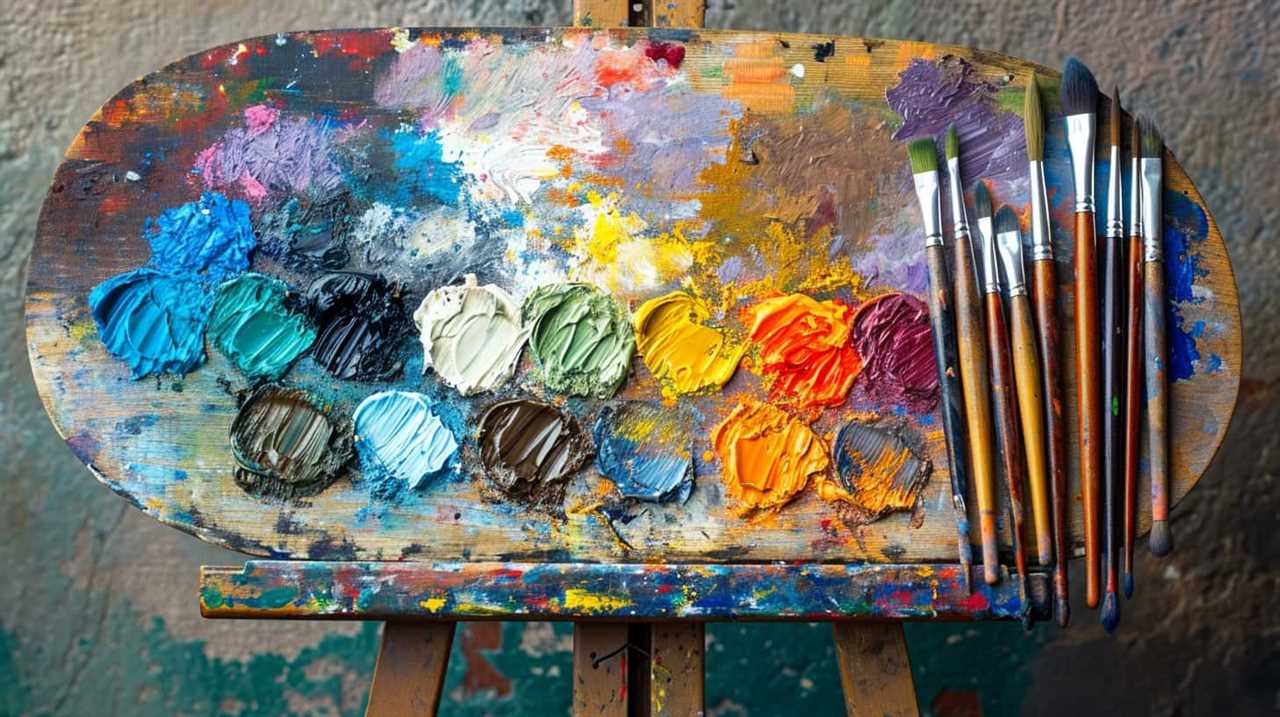
Art’s Emotional Power
We frequently experience the emotional power of art through the language of emotion it employs. Art has the unique ability to tap into our deepest emotions and stir something within us.
Whether it’s a painting, a sculpture, or a piece of music, art has the power to evoke a wide range of emotions, from joy and happiness to sadness and grief.
This emotional connection to art is what makes it such a powerful tool in art therapy and emotional healing. Through the process of creating and engaging with art, individuals can explore and express their emotions in a safe and non-judgmental space.
Art allows us to communicate and understand our emotions on a deeper level, leading to personal growth and healing.

Communicating Through Art
Through our engagement with art, we can effectively communicate and convey emotions using the language of emotion inherent in artistic expression. Art has the unique ability to evoke and express a wide range of emotions, allowing us to connect with others on a deep and profound level.
Whether it’s a painting, a sculpture, or a piece of music, art has the power to touch our hearts and stir our souls. This expressive nature of art has led to the development of art therapy, a form of therapy that utilizes artistic techniques to help individuals explore and process their emotions.
Impact of Artistic Expression
Artistic expression has a profound impact on our emotions, igniting a collective experience that transcends words alone. It has been recognized for its therapeutic effects, providing emotional healing through art. The language of emotion in art speaks directly to the depths of our being, evoking a range of feelings and stirring our souls.
Through art, we can express our deepest emotions, giving them a form and substance that words cannot fully capture. It allows us to communicate and connect with others on a profound level, creating a shared experience that transcends cultural and linguistic barriers.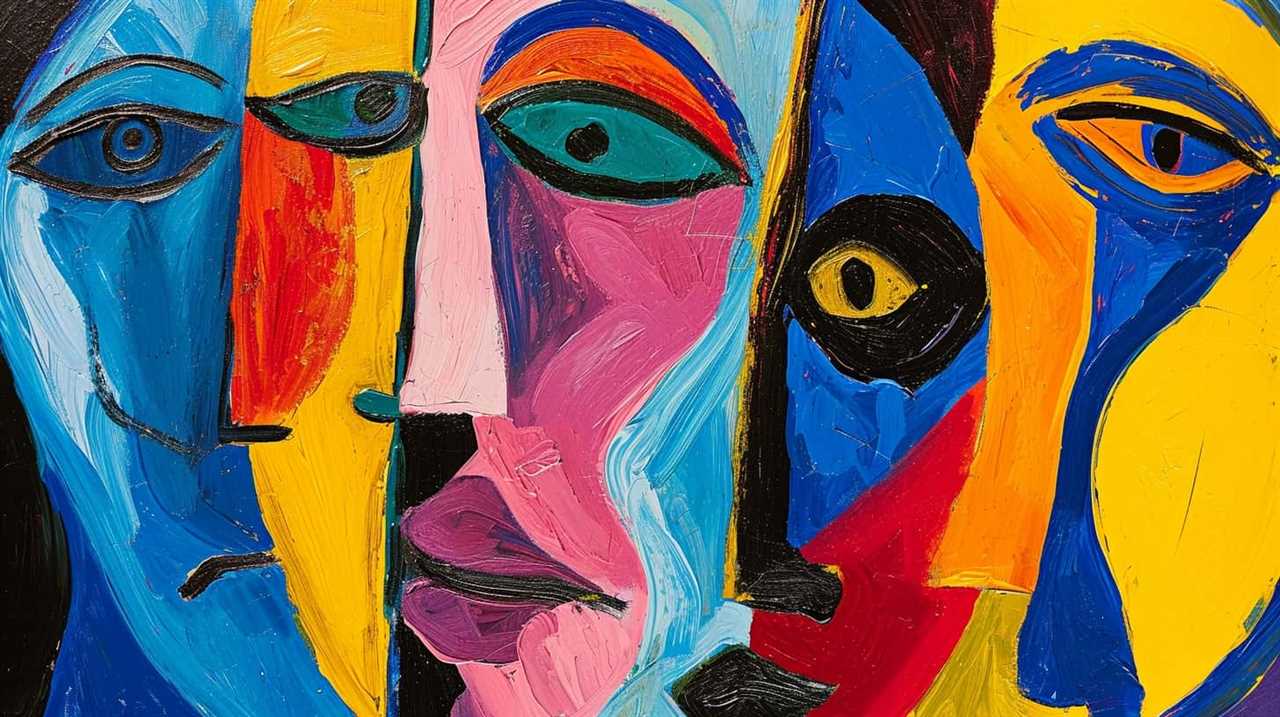
Art has the power to heal, offering solace and comfort in times of distress. It allows us to process and release our emotions, providing a cathartic outlet for our inner struggles and pain. The act of creating art can be a transformative experience, enabling us to channel our emotions in a constructive and meaningful way.
In a society that often prioritizes logic and reason, art serves as a reminder of our shared humanity and the importance of emotional expression. It encourages us to embrace our vulnerability and explore the depths of our emotions, fostering personal growth and self-discovery.
The therapeutic effects of art extend beyond the individual, reaching communities and society as a whole. Art can be a catalyst for social change, giving a voice to marginalized groups and challenging societal norms. Through art, we can create a space for dialogue, empathy, and understanding, fostering a sense of unity and collective healing.
In conclusion, artistic expression holds immense power in its ability to evoke and communicate emotions. It serves as a language of the soul, transcending barriers and offering emotional healing through art. By embracing and valuing the emotional impact of art, we can tap into its transformative potential and create a more compassionate and empathetic world.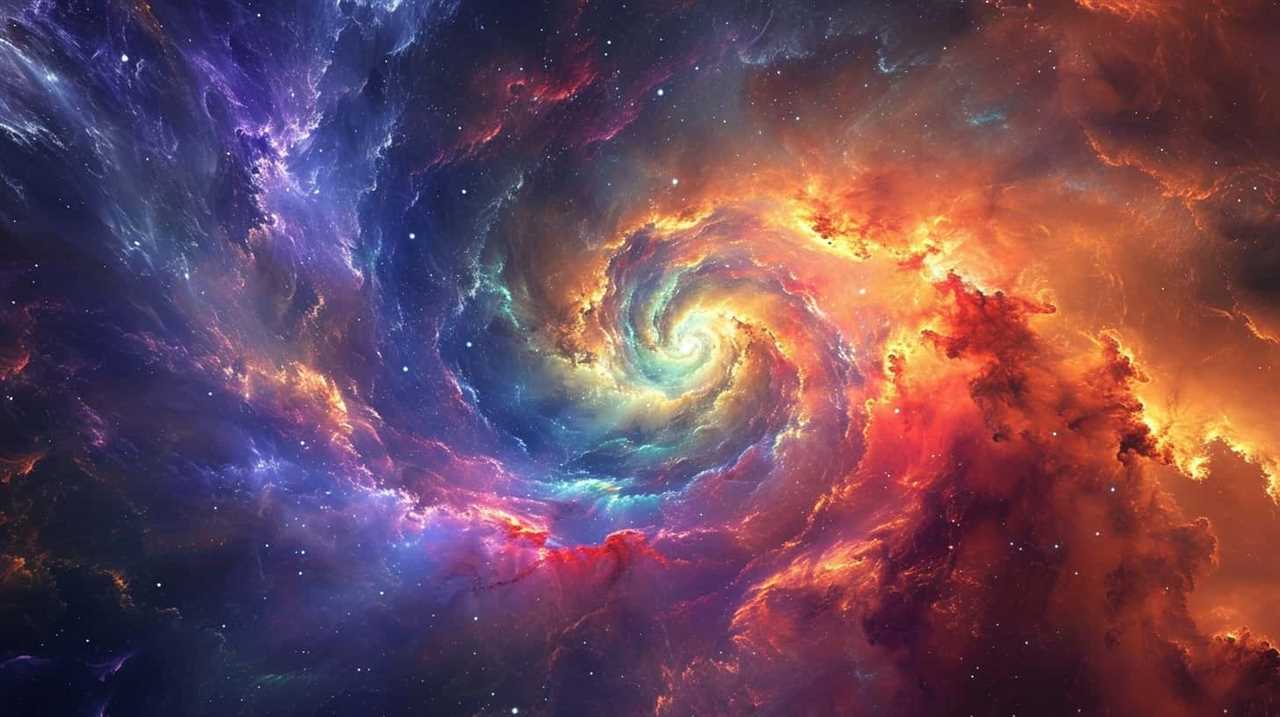
| Pros | Cons |
|---|---|
| Provides emotional healing and therapeutic effects | Can be subjective and open to interpretation |
| Fosters personal growth and self-discovery | May evoke difficult emotions and discomfort |
| Encourages empathy and understanding | Requires vulnerability and openness to emotions |
Capturing the Essence of Human Emotion in Art
Human emotion can be powerfully captured in art. Artists have long been fascinated with the exploration of vulnerability and the ability of art to evoke deep emotional responses. Through their work, they seek to tap into the universal human experience and elicit a range of emotions from their viewers. Here are three ways in which art captures the essence of human emotion:
- Visual storytelling: Artists have the unique ability to visually depict emotions through their chosen medium. Whether it’s a painting, sculpture, or photograph, art can convey complex emotions and narratives in a single image. The use of color, composition, and symbolism can evoke specific emotional responses and create a profound connection between the artist and the viewer.
- Expressive techniques: Artists often employ various techniques to convey emotions in their work. Brushstrokes, texture, and the manipulation of materials can all contribute to the emotional impact of a piece. By experimenting with different techniques, artists can effectively communicate the depth and intensity of human emotion.
- Cathartic release: Art has long been recognized for its therapeutic benefits. Creating art can provide individuals with a safe and non-judgmental outlet to express and process their emotions. Through the act of creation, artists can release pent-up feelings and find solace in the transformative power of art. Similarly, viewing art can also offer a cathartic experience, allowing viewers to connect with their own emotions and find comfort or inspiration in the work of others.
Art’s Emotional Resonance
Art’s emotional resonance can be felt deeply and universally. It has the power to touch our hearts and evoke a wide range of emotions. Whether it be a painting, a sculpture, or a piece of music, art has the ability to elicit strong emotional responses within us.
One way in which art can have a profound emotional impact is through art therapy. This therapeutic practice utilizes the creative process of making art to improve a person’s physical, mental, and emotional well-being. Art therapy provides individuals with a safe and non-judgmental space to express and process their emotions. Through the act of creating art, individuals can explore their innermost thoughts and feelings, leading to emotional healing and growth.
Art’s emotional resonance can also be seen in its ability to evoke empathy and understanding. When we engage with a work of art that depicts the human experience, we’re able to connect with the emotions portrayed and gain a deeper understanding of our own emotions as well as those of others. This emotional connection allows us to build bridges of empathy and compassion, fostering a sense of unity and shared humanity.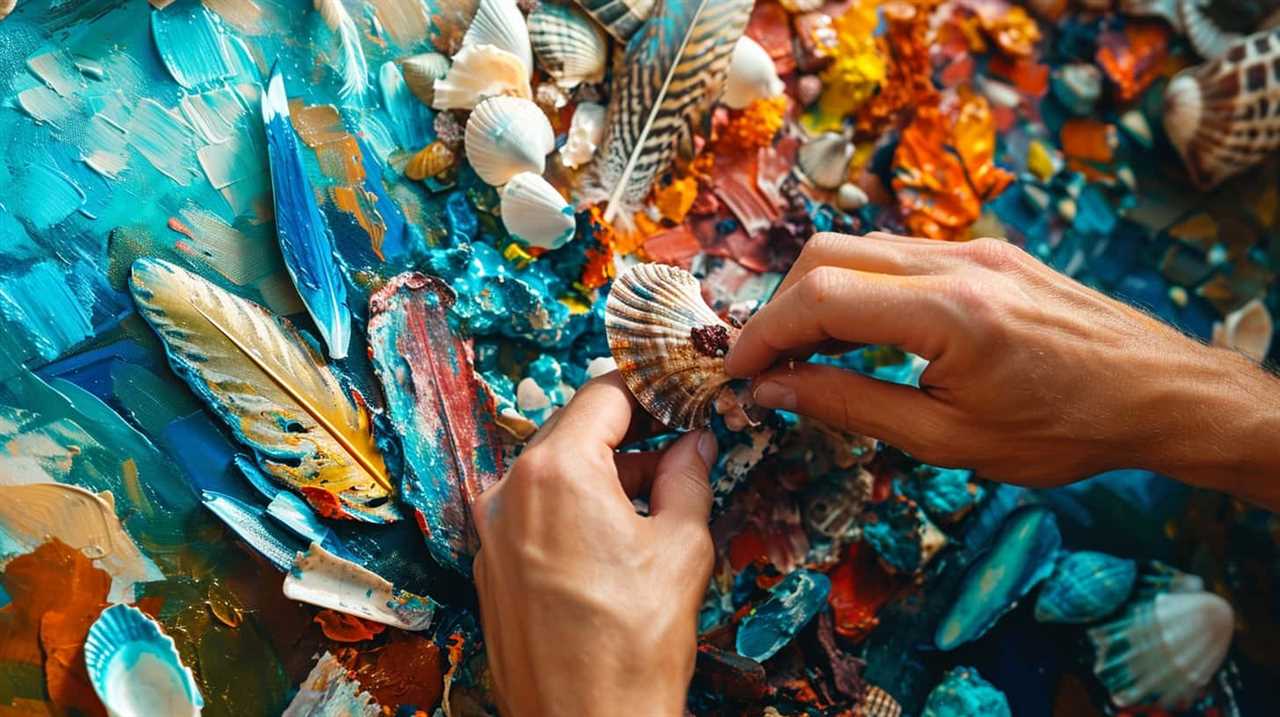
Art’s Role in Expressing Emotion
When creating art, we harness the power of visual expression to convey the depth of our emotions. Art has an important role in expressing emotion, especially in the context of therapy and emotional healing.
Through various artistic mediums, individuals can explore and communicate their innermost feelings, facilitating personal growth and healing. Here are three key ways in which art fulfills this role:
- Art as a form of self-expression: By engaging in artistic activities, individuals can express emotions that may be difficult to put into words. Art provides a nonverbal outlet for the expression of complex emotions, allowing for a deeper exploration of one’s inner world.
- Art as a means of communication: Art has the ability to transcend language barriers and reach a universal audience. Through their creations, artists can communicate their emotions to others, fostering empathy and understanding.
- Art as a therapeutic tool: The role of art in therapy is widely recognized. Engaging in artistic activities can promote self-awareness, emotional healing, and personal transformation. Art therapy interventions, such as painting, drawing, or sculpting, can help individuals process traumatic experiences, reduce stress, and improve overall well-being.
Can you provide examples of how art has emotionally influenced people?
Art has the power to evoke deep emotions and leave a lasting impact on people’s lives. Some of the best art influence quotes come from famous artists like Vincent van Gogh, who said, “I am seeking. I am striving. I am in it with all my heart.” This shows how art can deeply move and inspire individuals.
The Emotional Journey of Art
As we engage with art, we embark on an emotional journey that awakens our senses and stirs our innermost feelings. Art has the power to evoke a wide range of emotions within us, from joy and excitement to sadness and contemplation. This emotional journey isn’t only a form of entertainment or aesthetic pleasure, but it also has therapeutic effects on our well-being.
Art’s therapeutic effects are well-documented and have been recognized for centuries. When we immerse ourselves in a painting, a piece of music, or a play, we enter into a different world that allows us to explore and process our own emotions. The act of engaging with art can provide a safe space for us to release and express our feelings, offering a form of emotional healing.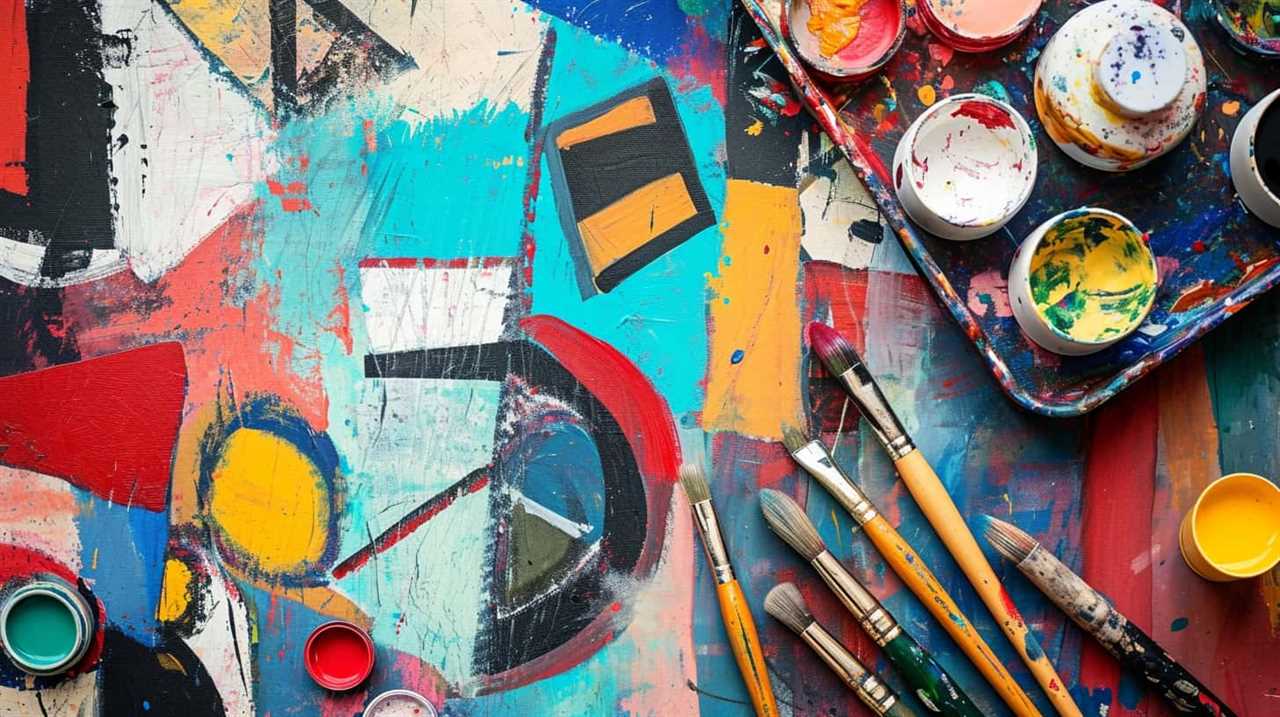
Art has the ability to touch us in profound ways, tapping into our deepest emotions and experiences. It can serve as a mirror, reflecting our own struggles and triumphs, and offering solace and comfort. Through art, we can find a sense of connection and understanding, both with ourselves and with others. It allows us to explore complex emotions that may be difficult to put into words, giving us a means of expression and catharsis.
Frequently Asked Questions
How Does Art Emotionally Impact Different Individuals?
Art emotionally impacts different individuals by evoking personal experiences and reflecting cultural and societal influences. Our emotional responses to art are shaped by our unique backgrounds, allowing us to connect and interpret the artwork in meaningful and diverse ways.
Can Art Evoke Emotions That Are Difficult to Express Through Words?
Art can indeed evoke emotions that are difficult to express through words. It serves as a powerful tool for emotional expression, allowing individuals to tap into their innermost feelings and experiences. The power of visual storytelling enhances the emotional impact of art narratives.
Is There a Specific Type of Art That Has a Greater Emotional Influence?
Certain art forms have a profound emotional impact that transcends cultural differences. From the visceral power of abstract expressionism to the poignant narratives of literature, each specific form has the potential to deeply move and resonate with individuals.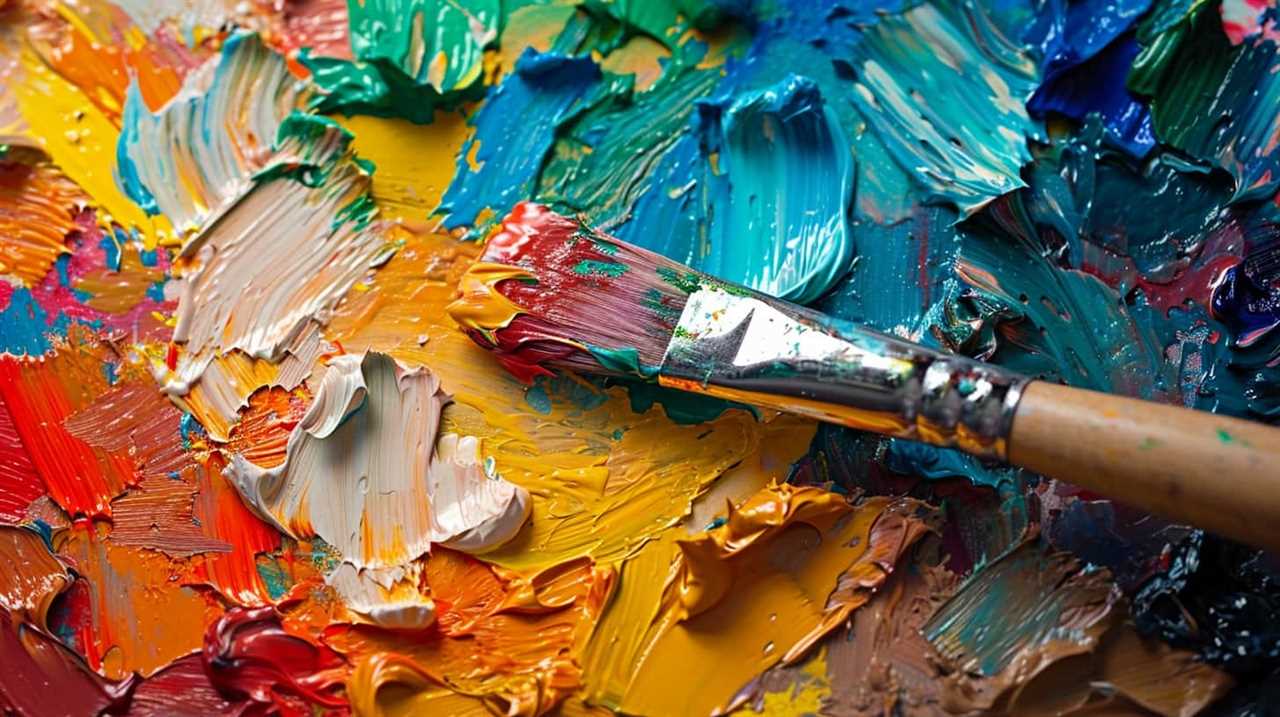
Are There Any Scientific Studies That Support the Emotional Impact of Art?
Scientific evidence supports the emotional impact of art, particularly through art therapy. Studies have shown that engaging in artistic activities can improve mental health, reduce stress, and promote self-expression, making it a valuable tool for emotional healing and well-being.
How Can Artists Effectively Convey Emotions Through Their Artwork?
When artists want to effectively convey emotions through their artwork, they can use color symbolism to evoke specific feelings in viewers. Additionally, incorporating personal experiences allows for a deeper and more authentic emotional connection.
Conclusion
In conclusion, art’s emotional influence is immeasurable and undeniable. It serves as a soulful gateway, evoking deep and transformative emotions within us.
Through its ability to stir and resonate with our innermost feelings, art captures the essence of human emotion and expresses it in a profound and meaningful way. It takes us on an emotional journey, allowing us to connect with our own emotions and the emotions of others.
Art truly has the power to touch our souls and leave an indelible mark on our hearts.
Lauren’s talent in writing is matched by her passion for storytelling. Her love for books and deep understanding of culture and entertainment add a distinct flavor to her work. As our media and press contact, Lauren skillfully bridges the gap between afterQuotes and the broader media landscape, bringing our message to a wider audience.
-

 Funerals Quotations3 months ago
Funerals Quotations3 months agoSoothing Hope Quotes for Funeral Reflections
-

 TV Shows Quotations2 months ago
TV Shows Quotations2 months agoTop 4 Unforgettable TV Drama Monologues
-

 Movies Quotations4 weeks ago
Movies Quotations4 weeks agoUnforgettable Cult Movie Quotes: A Compiled List
-

 Education and Knowledge1 week ago
Education and Knowledge1 week agoUnlock Success with the Best Study Motivation Quotes
-

 Travel and Exploration Quotations3 weeks ago
Travel and Exploration Quotations3 weeks agoWisdom on Waves: Notable Maritime Explorer Quotations
-

 Education and Knowledge1 week ago
Education and Knowledge1 week agoBest Study Quotes: Unlock Student Potential!
-

 Military Quotations2 months ago
Military Quotations2 months agoInspiring Military Quotations for Strength & Honor
-

 Travel and Exploration Quotations3 weeks ago
Travel and Exploration Quotations3 weeks agoWhy Travel Teaches Unforgettable Life Wisdom?

















